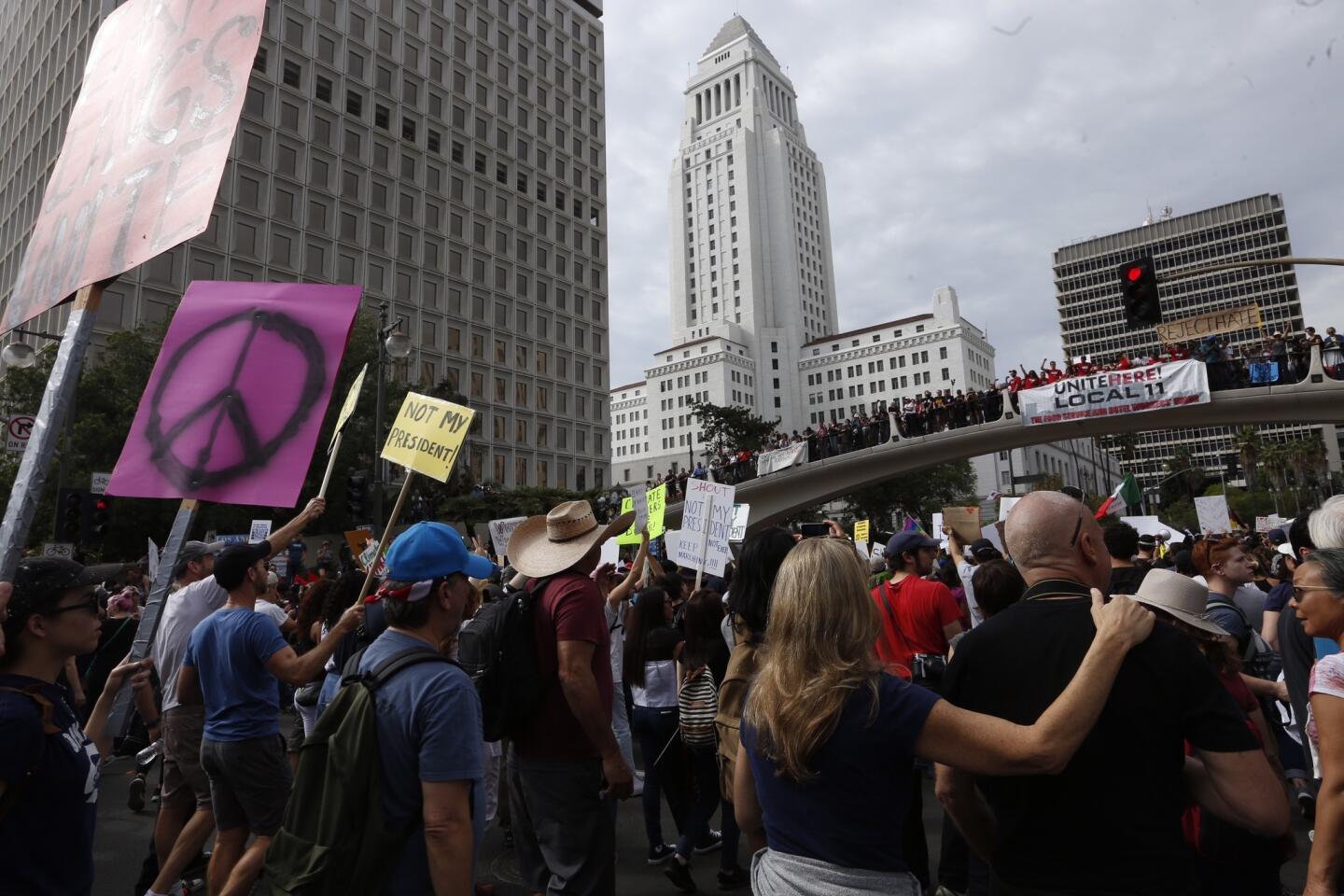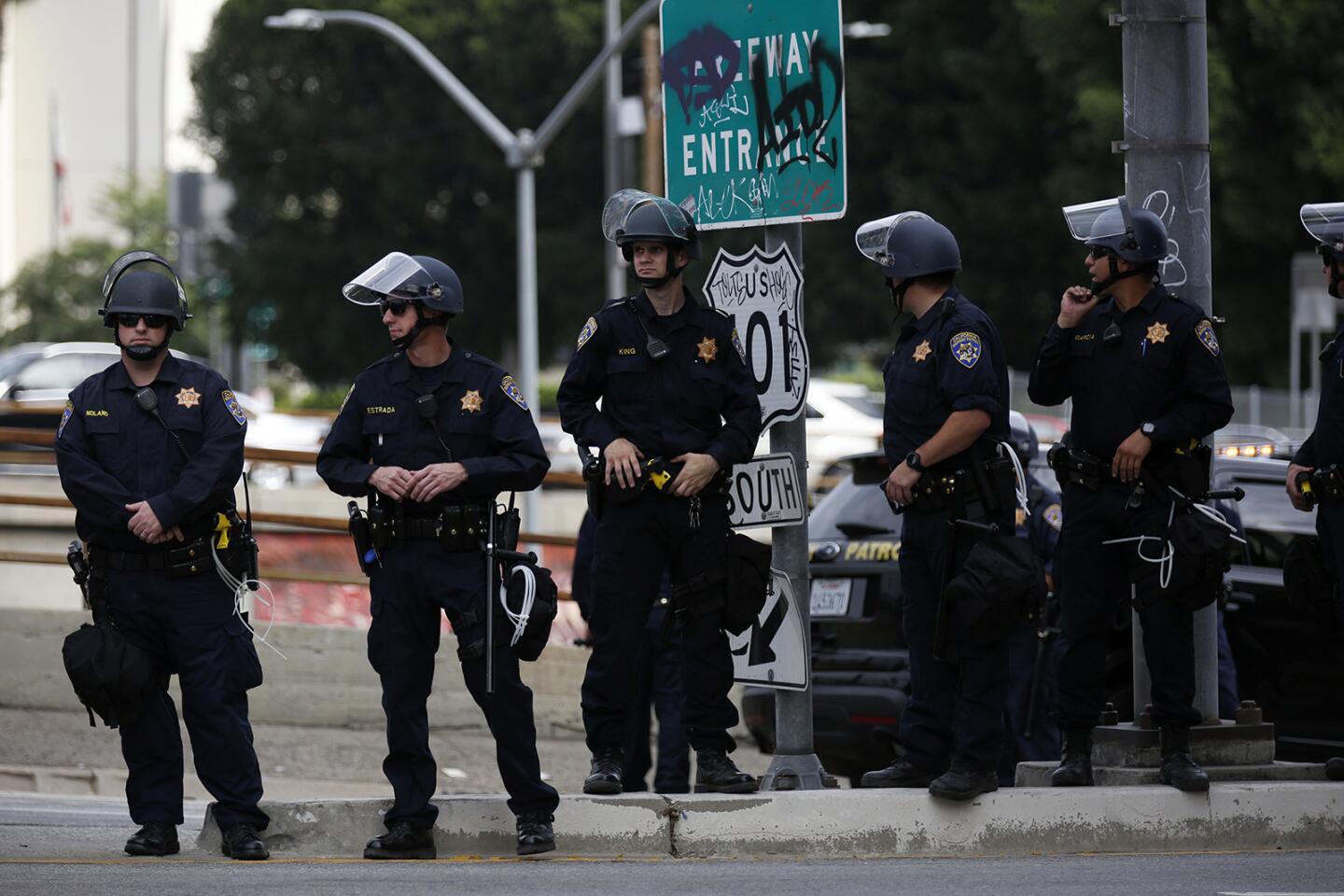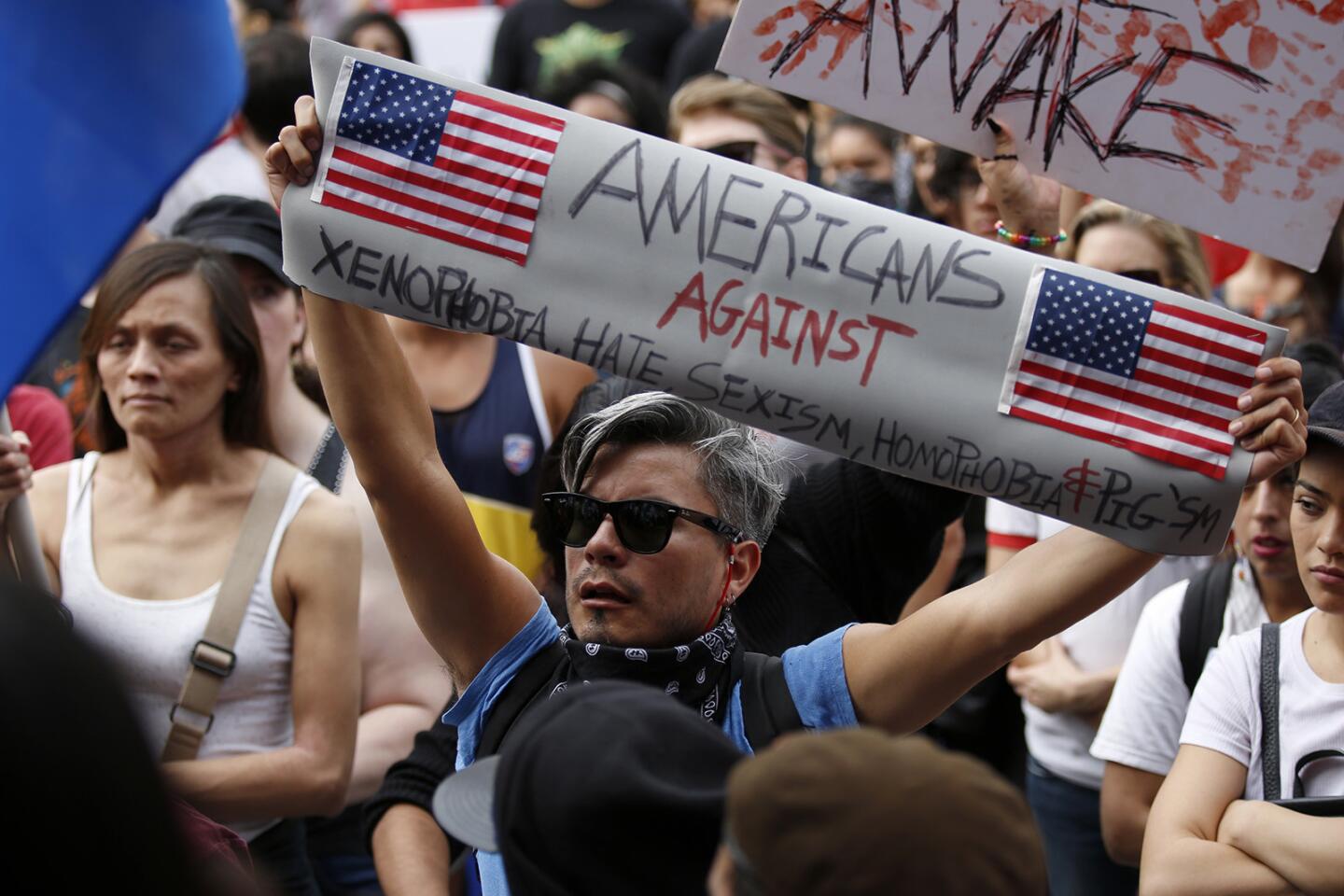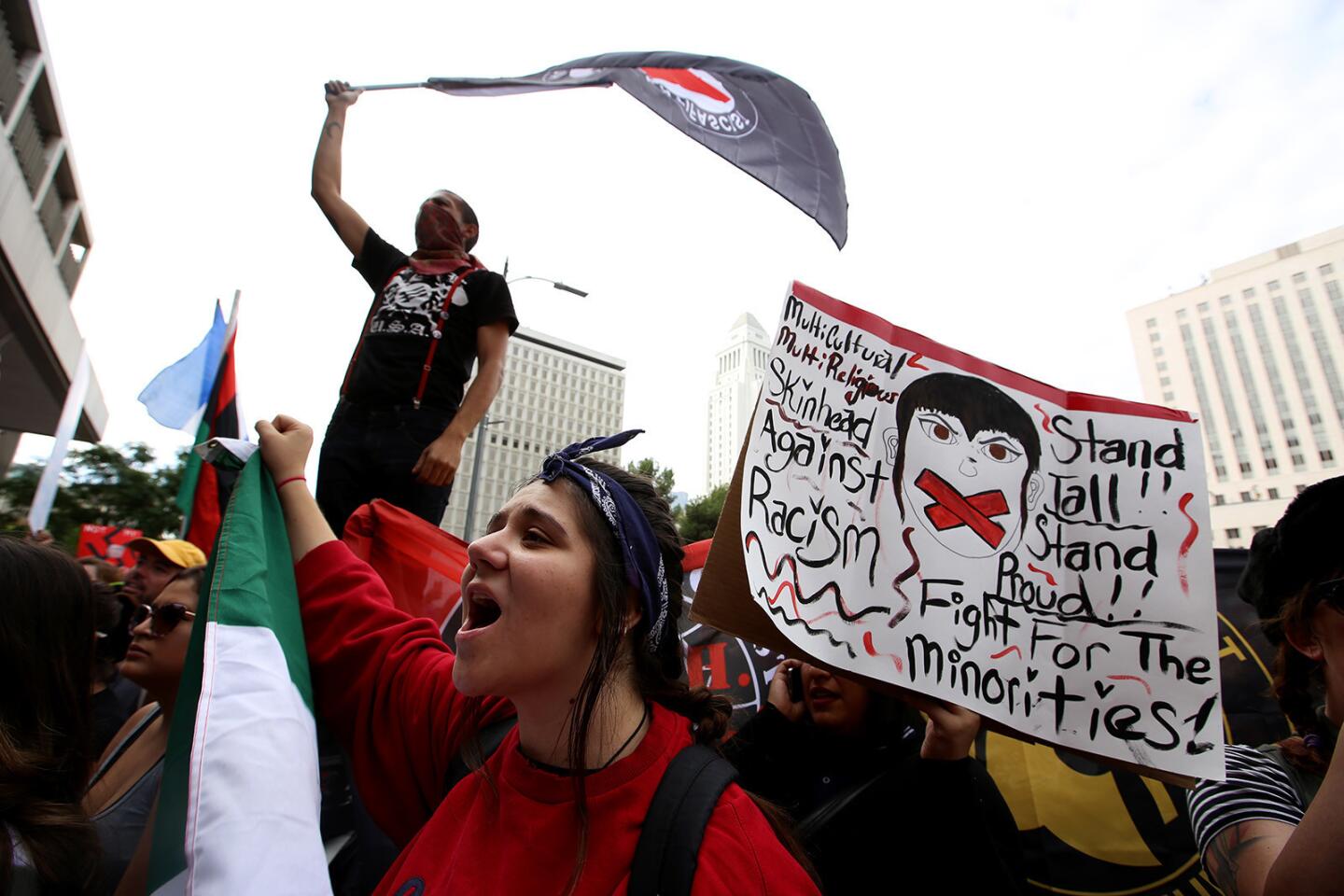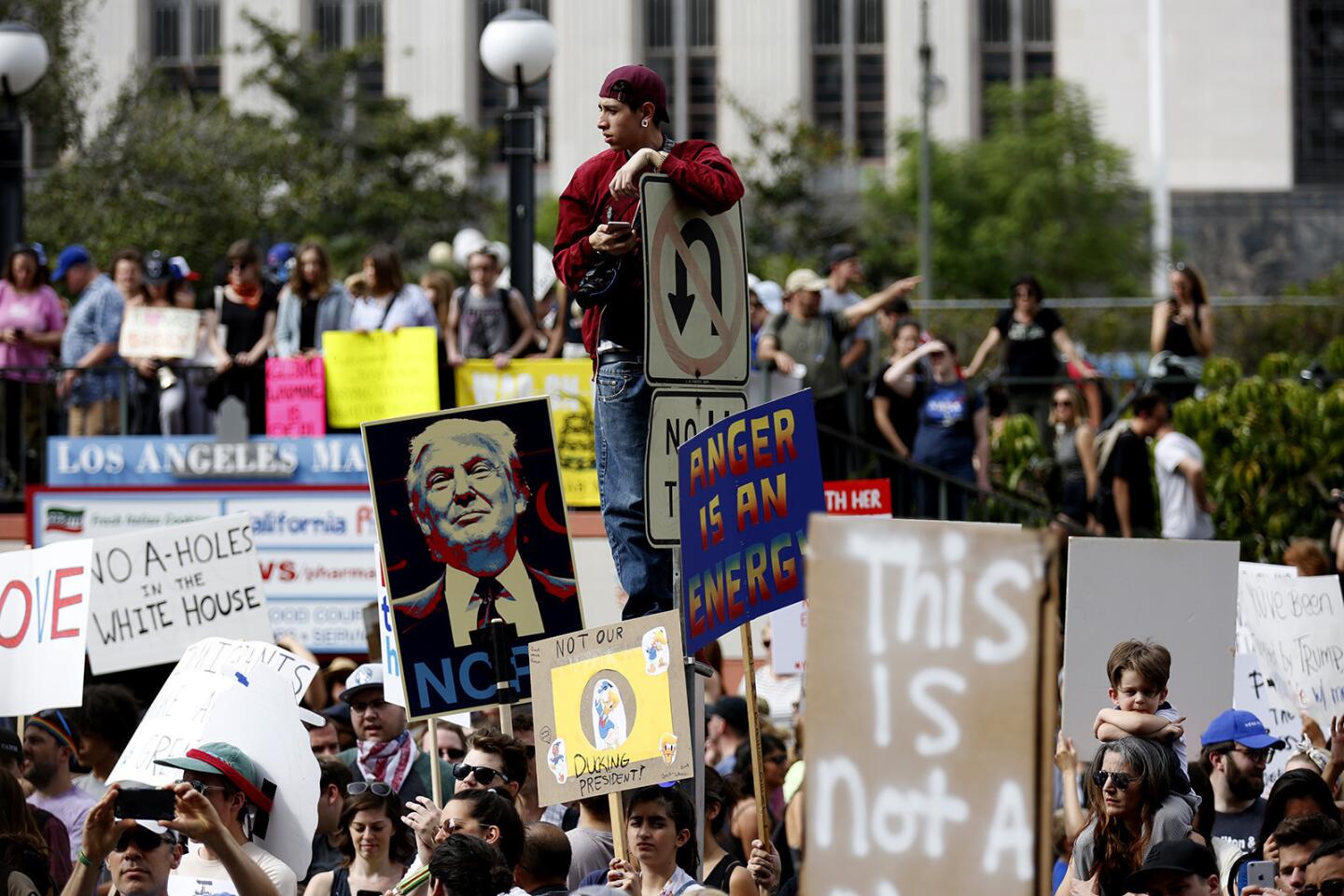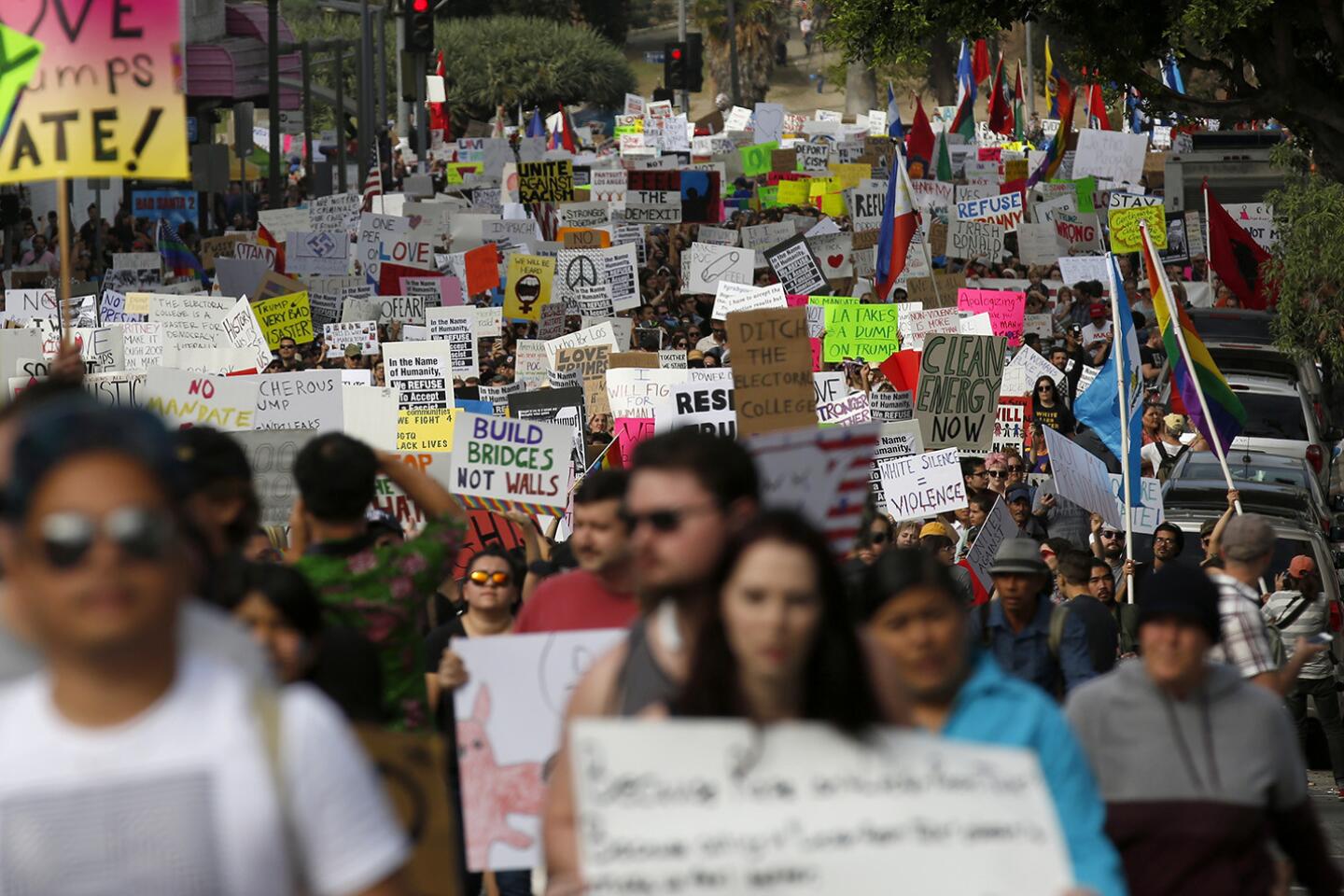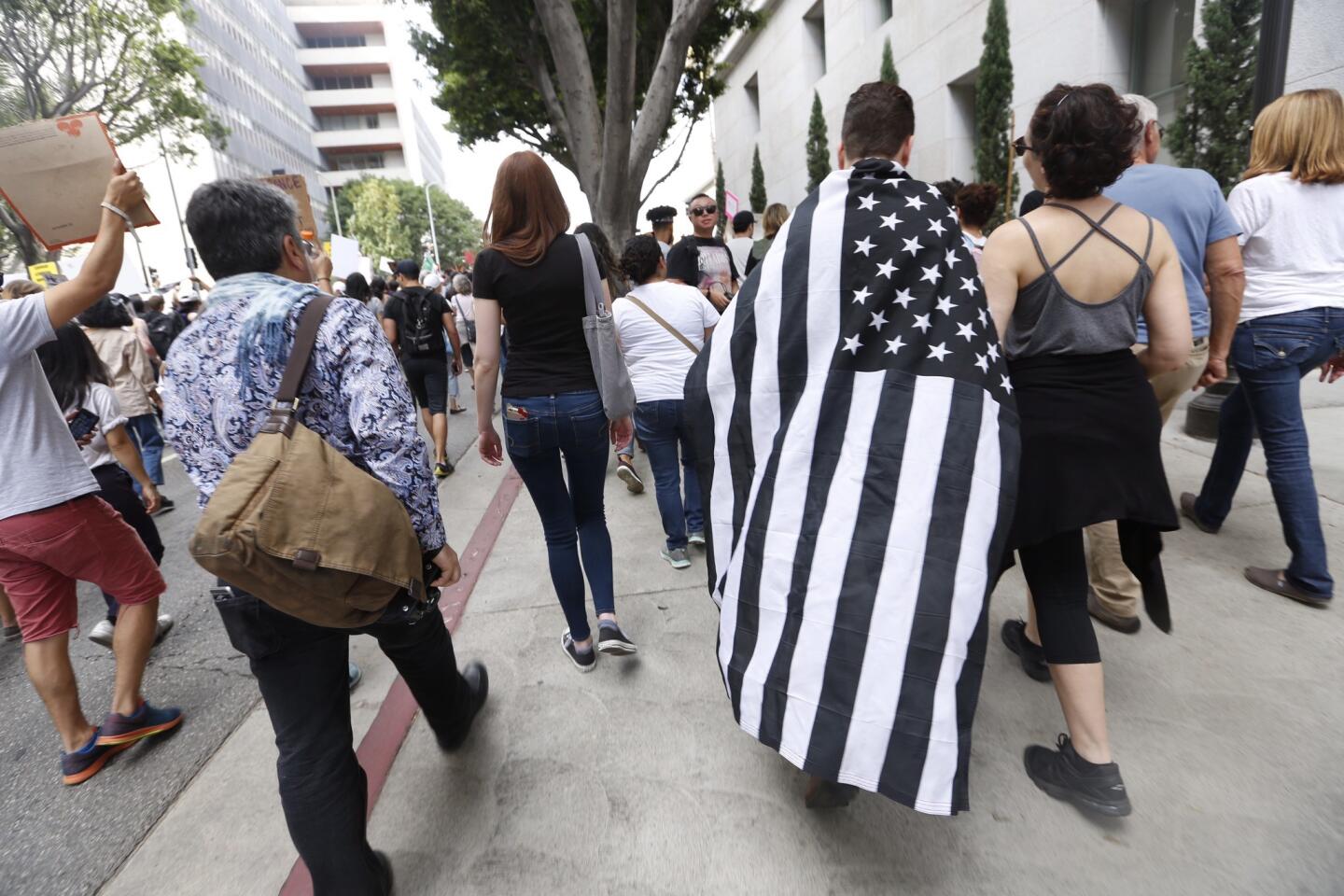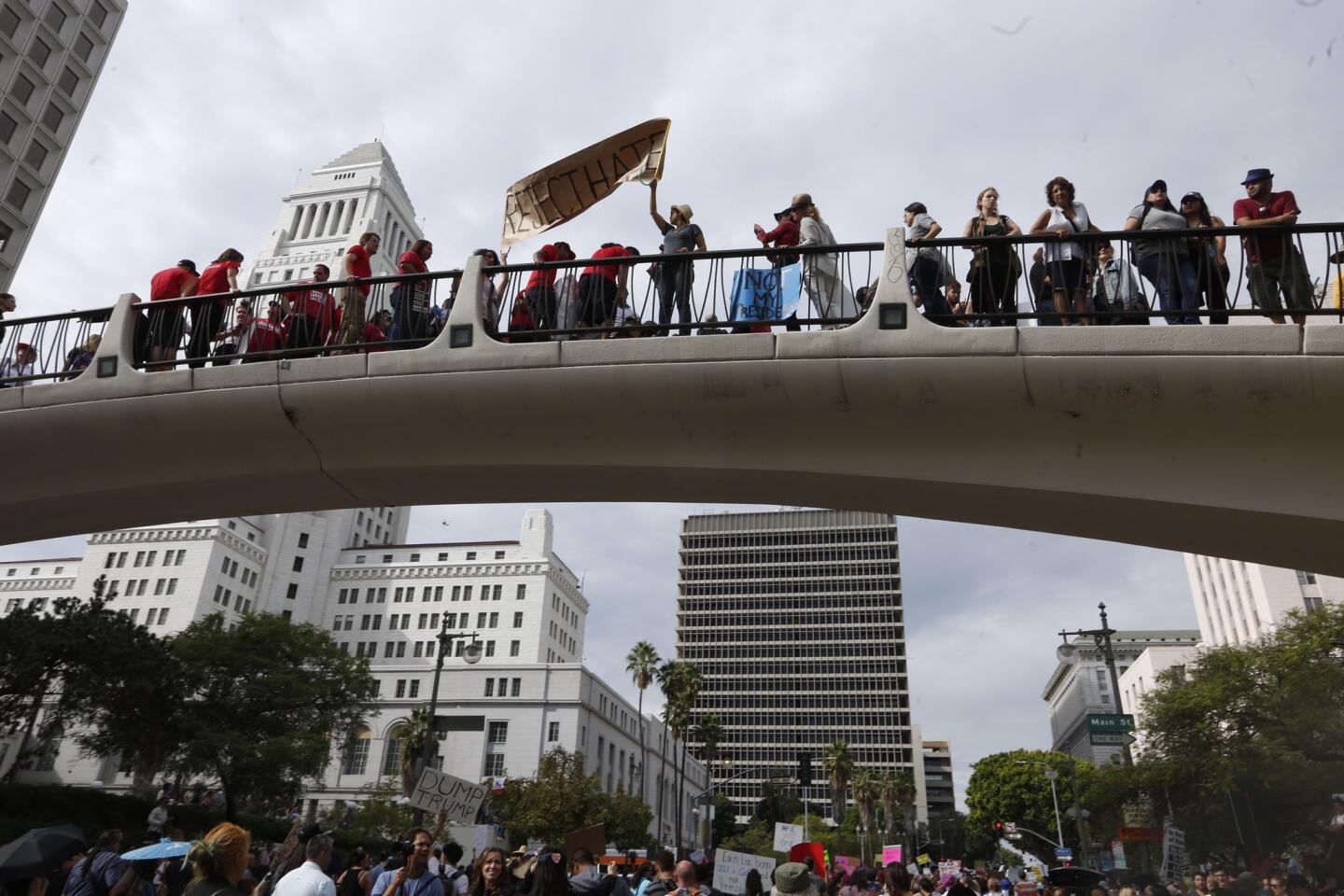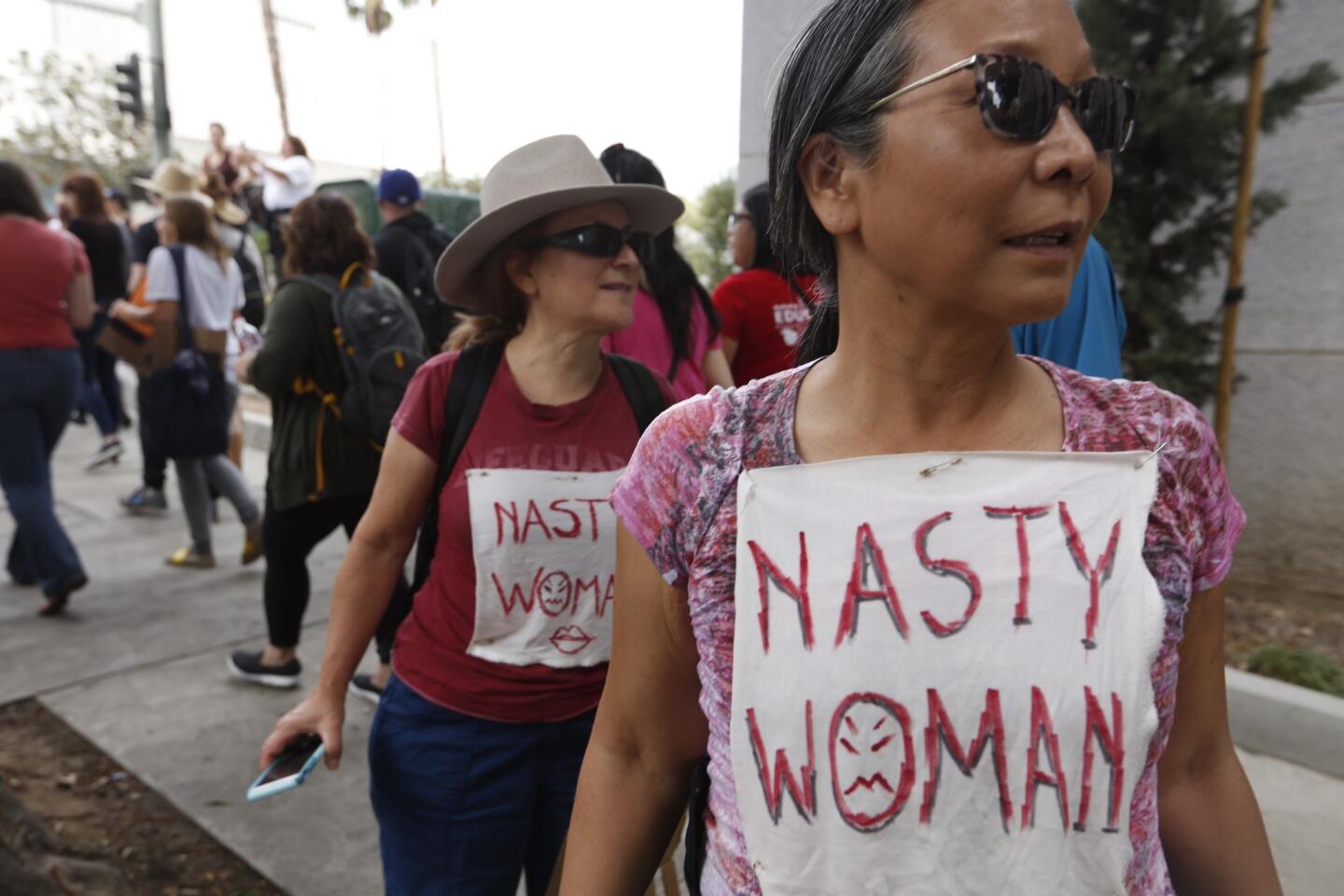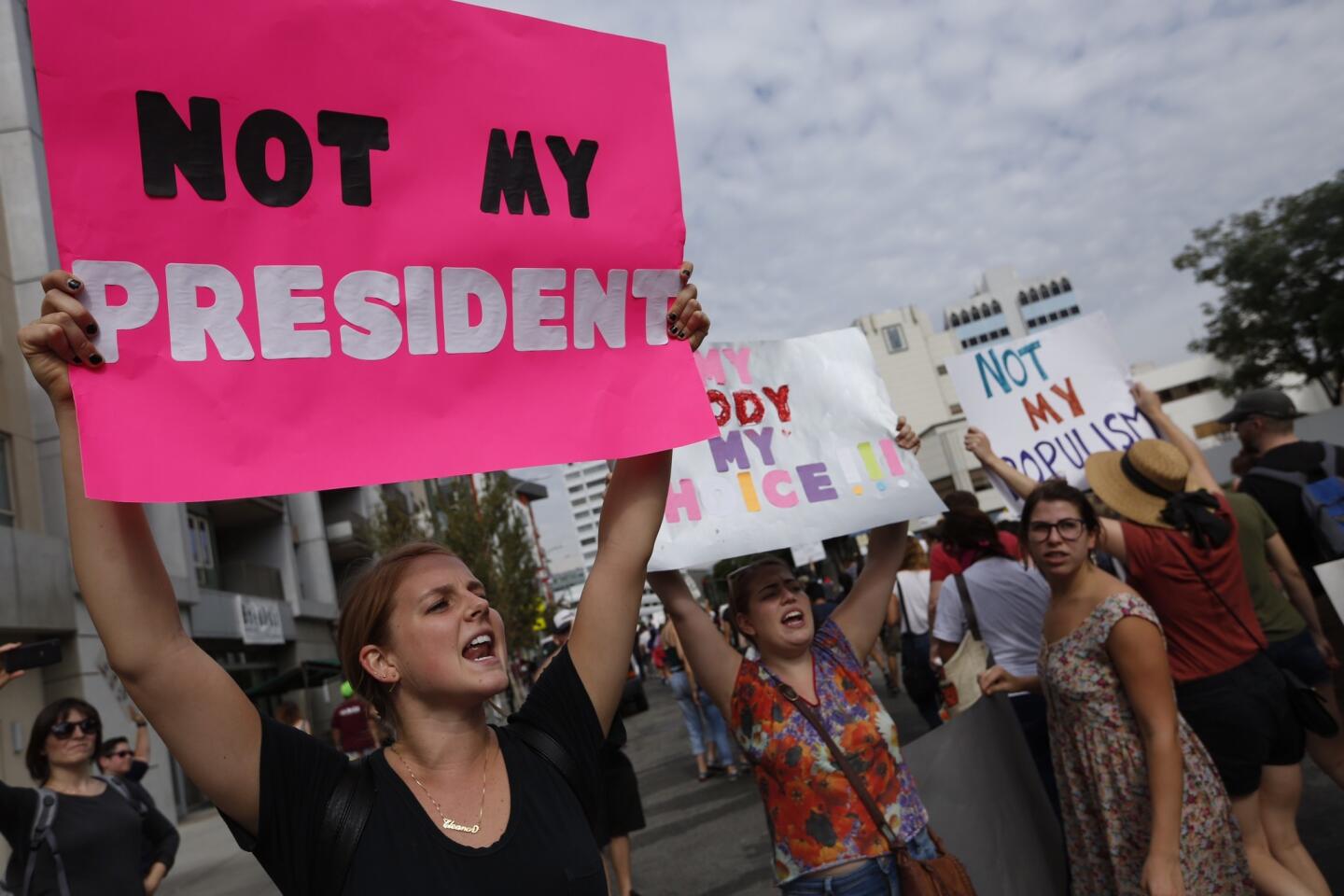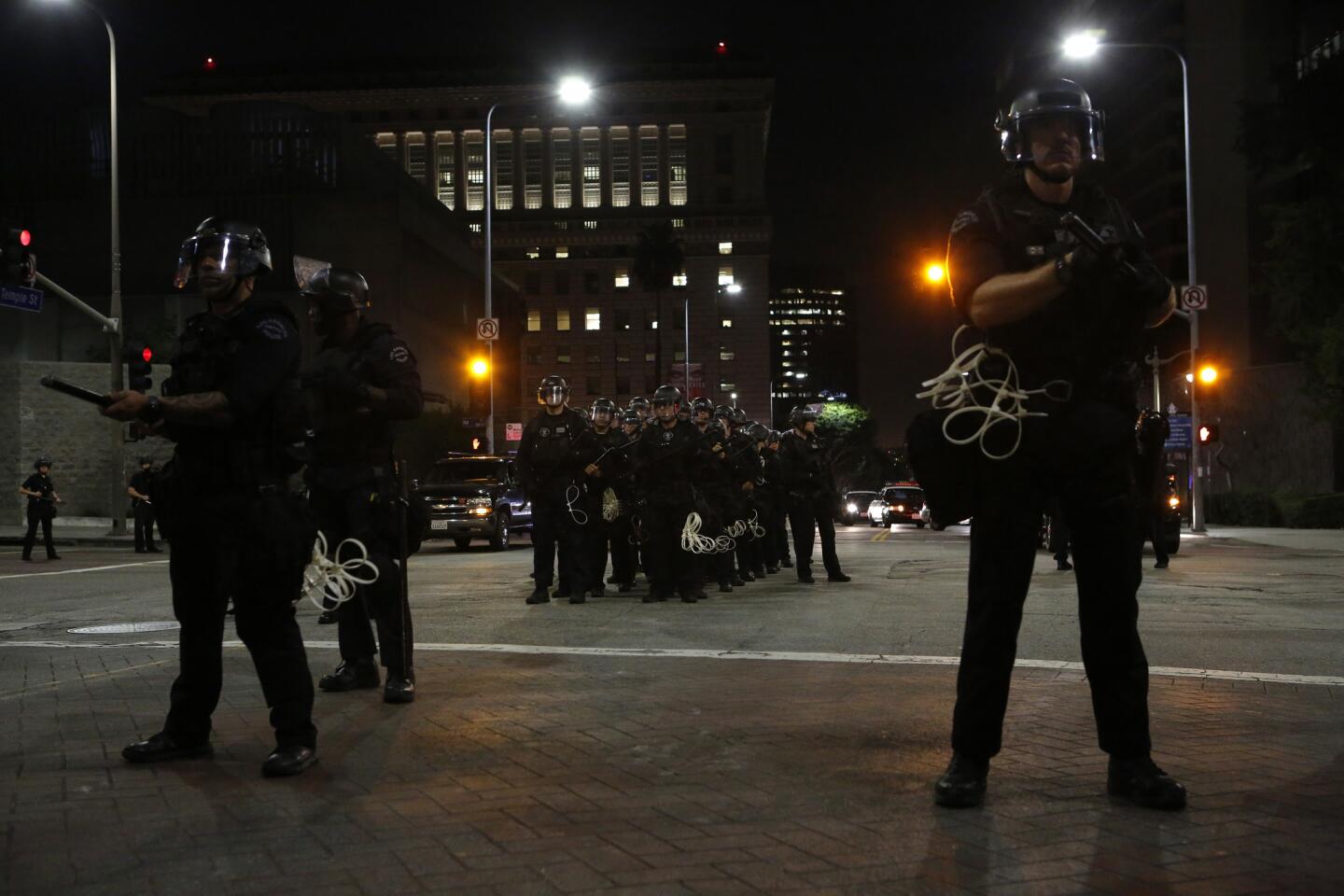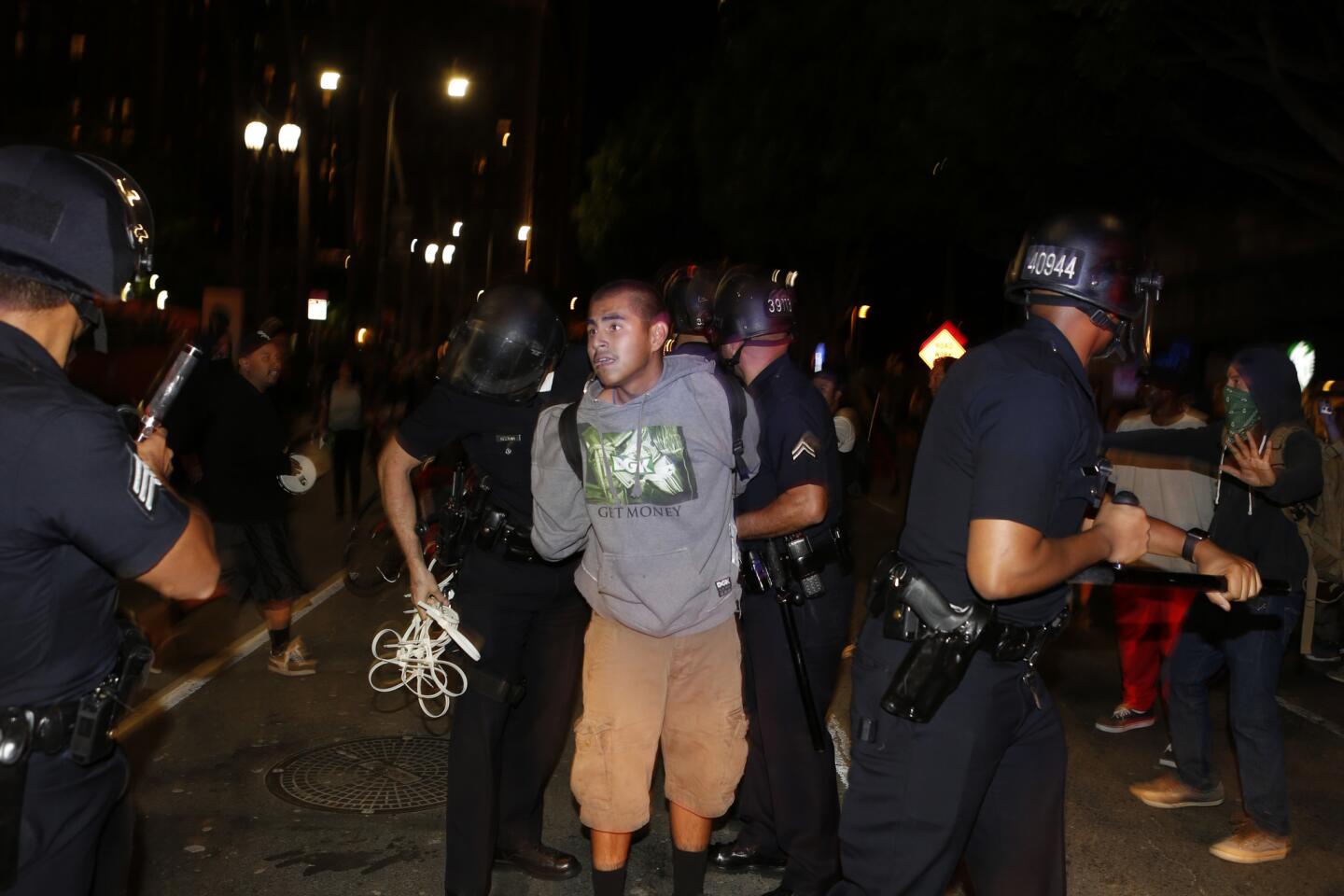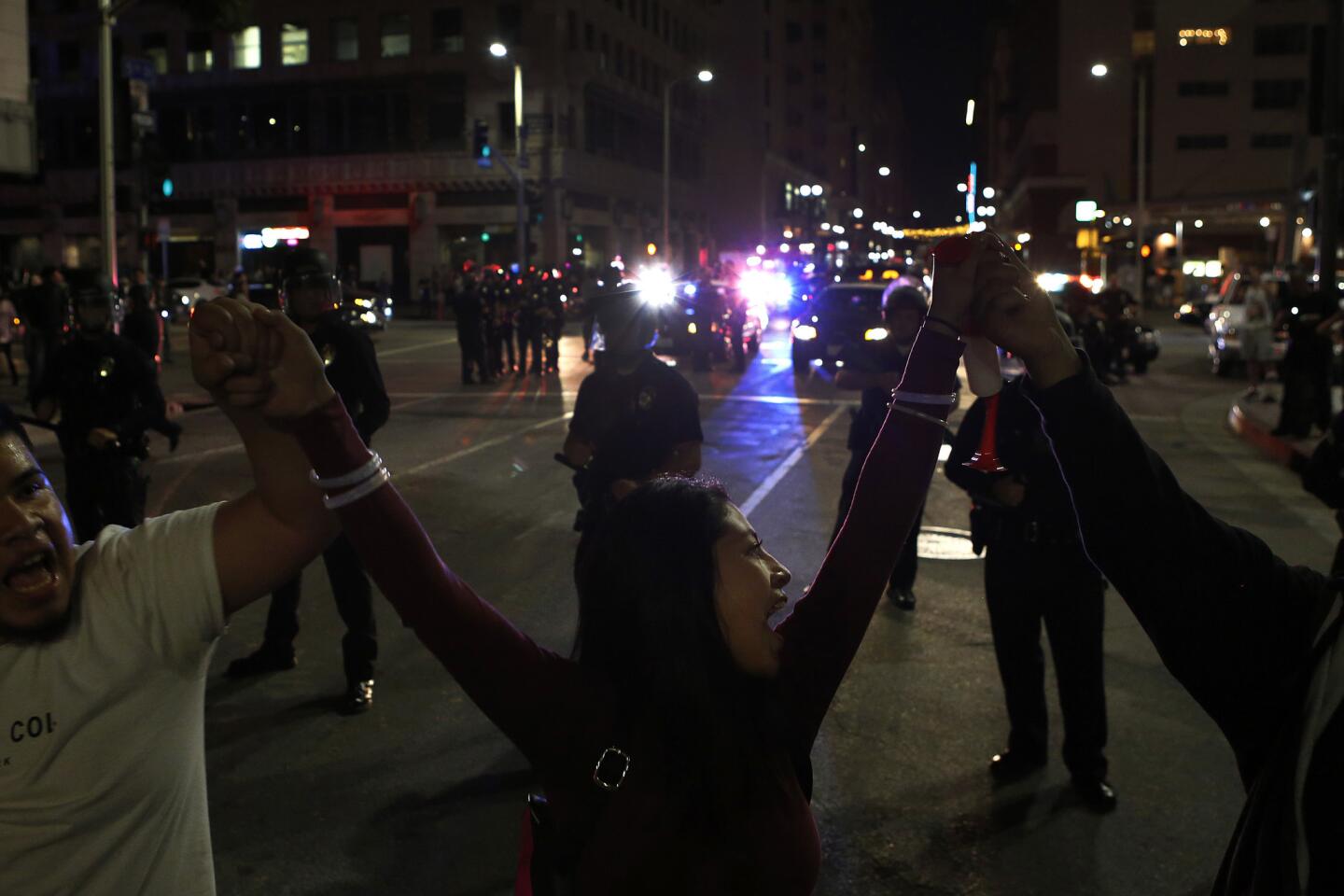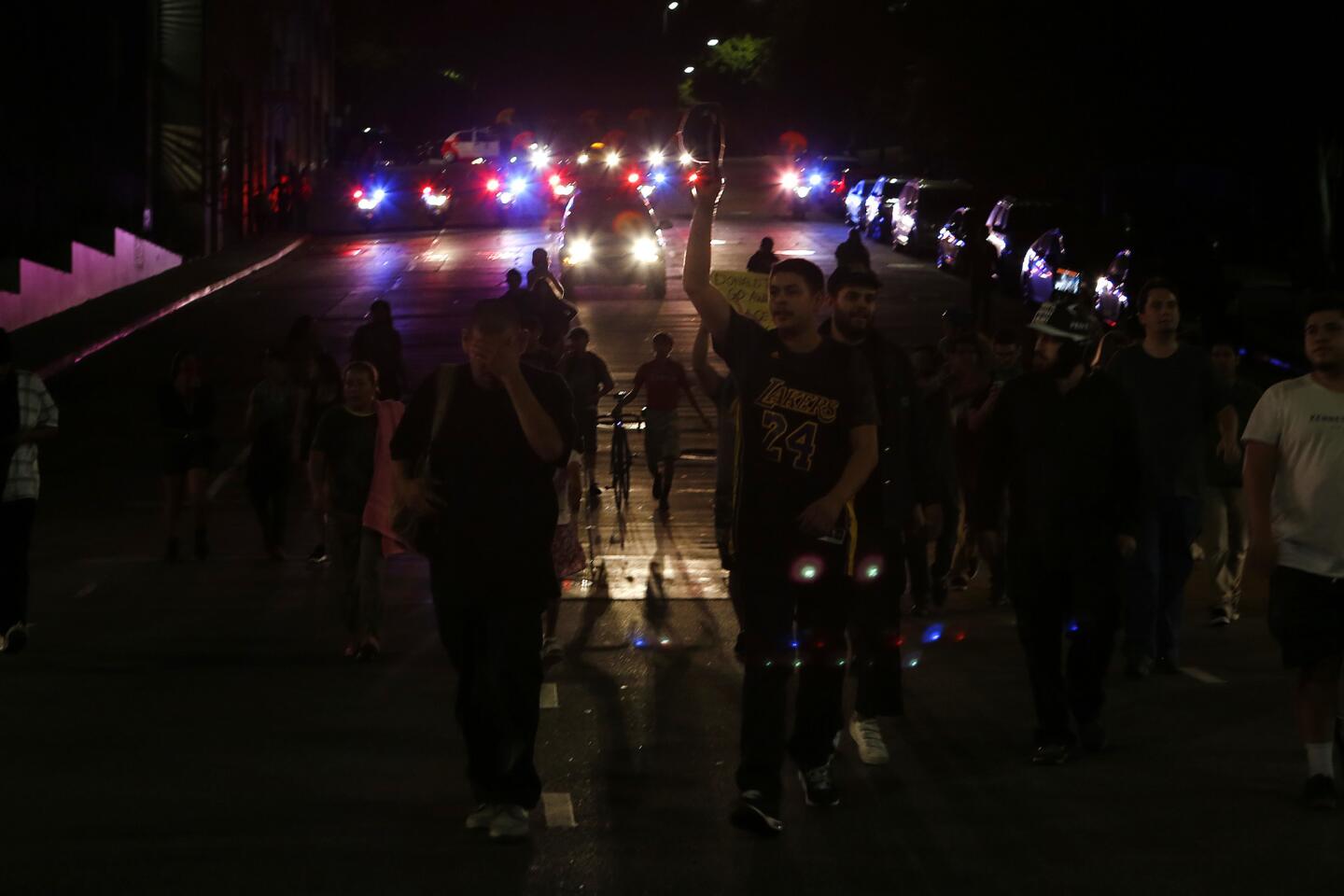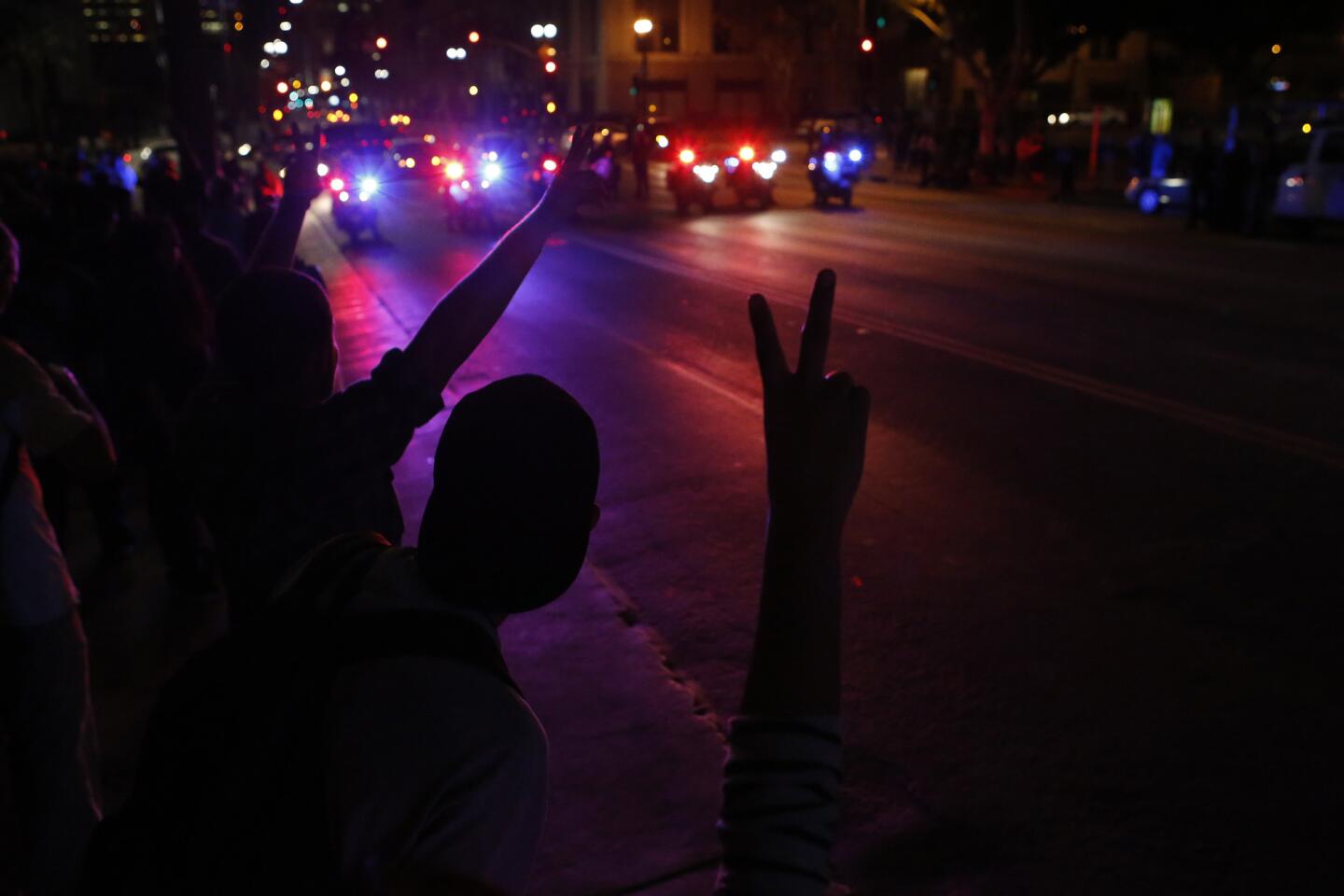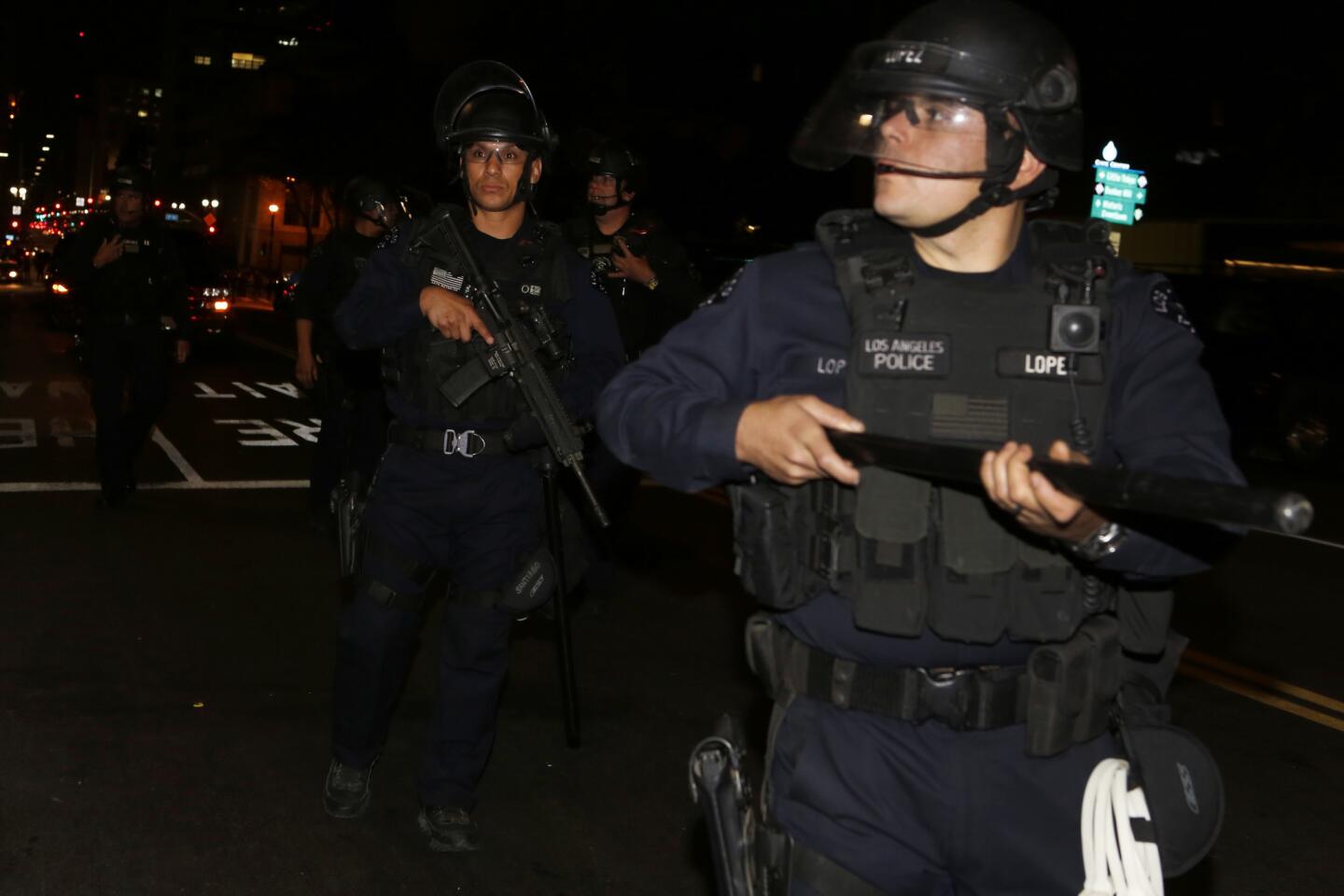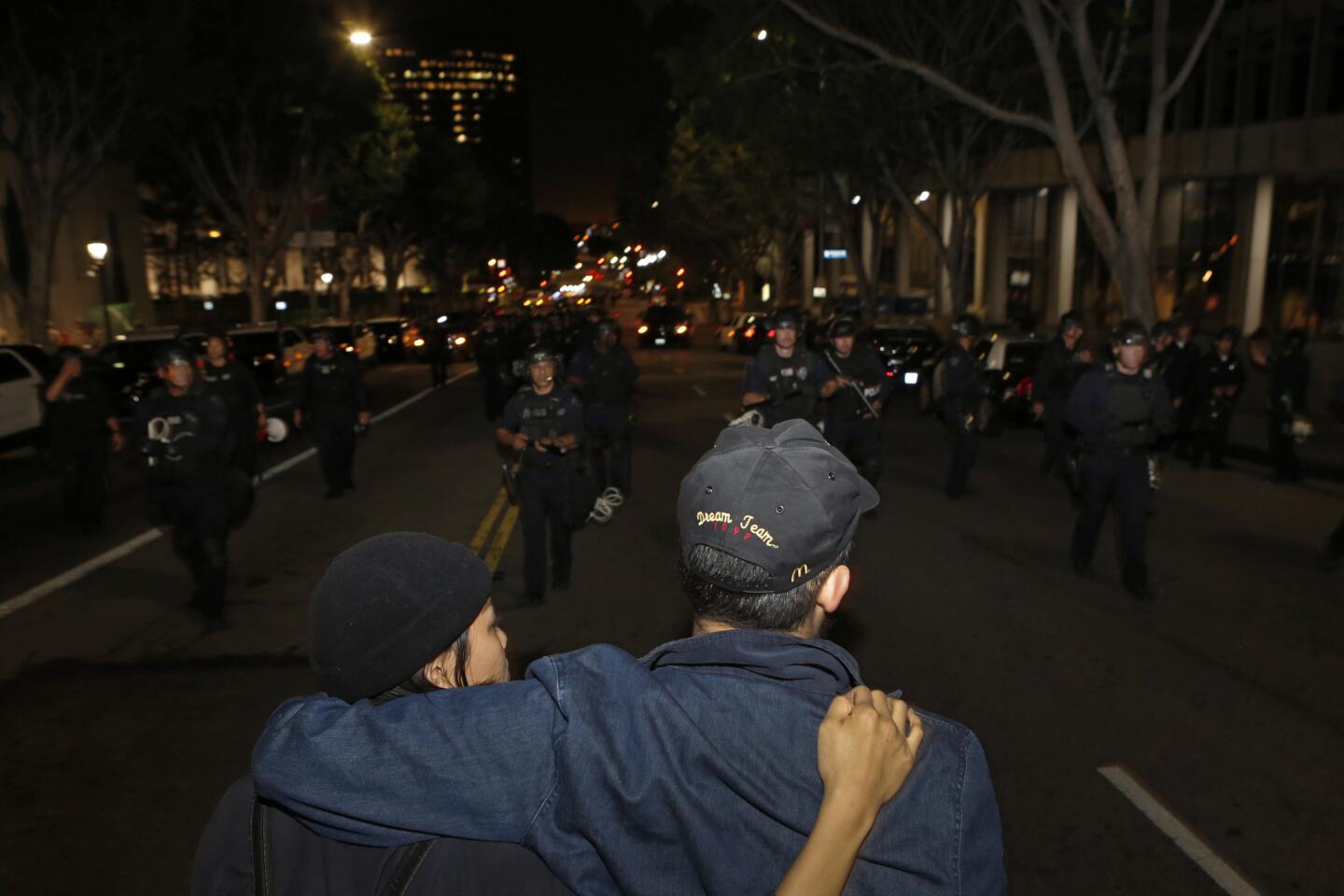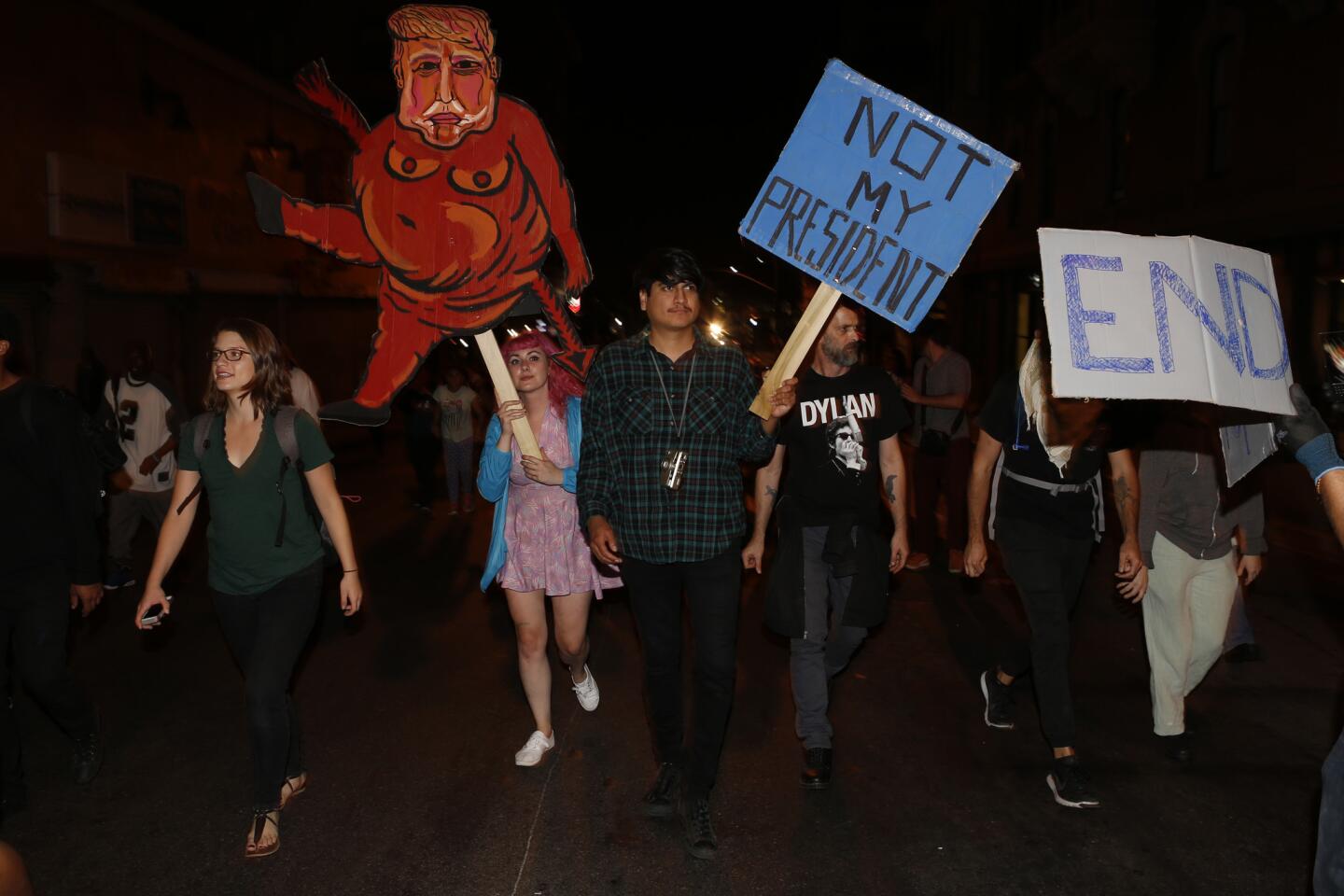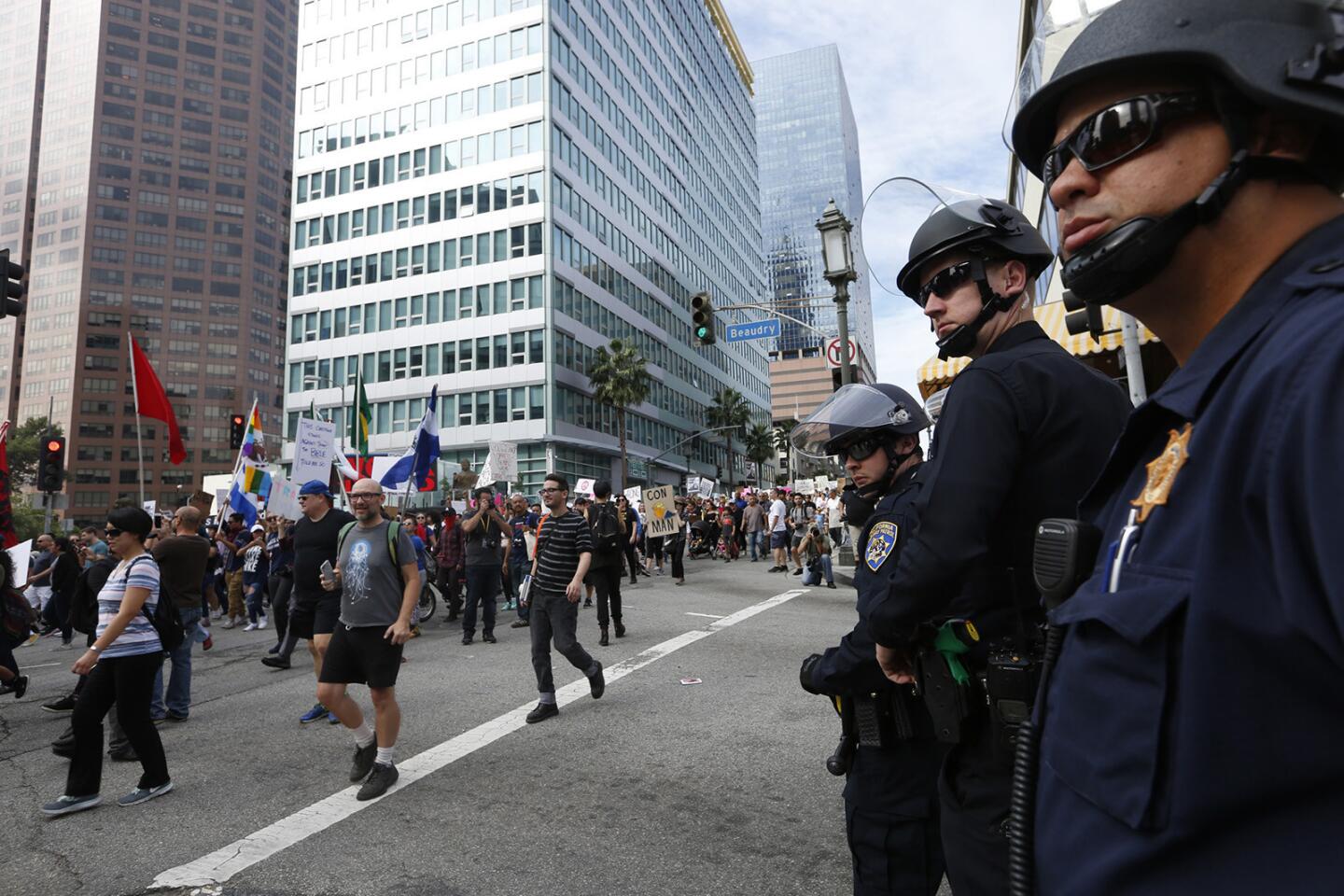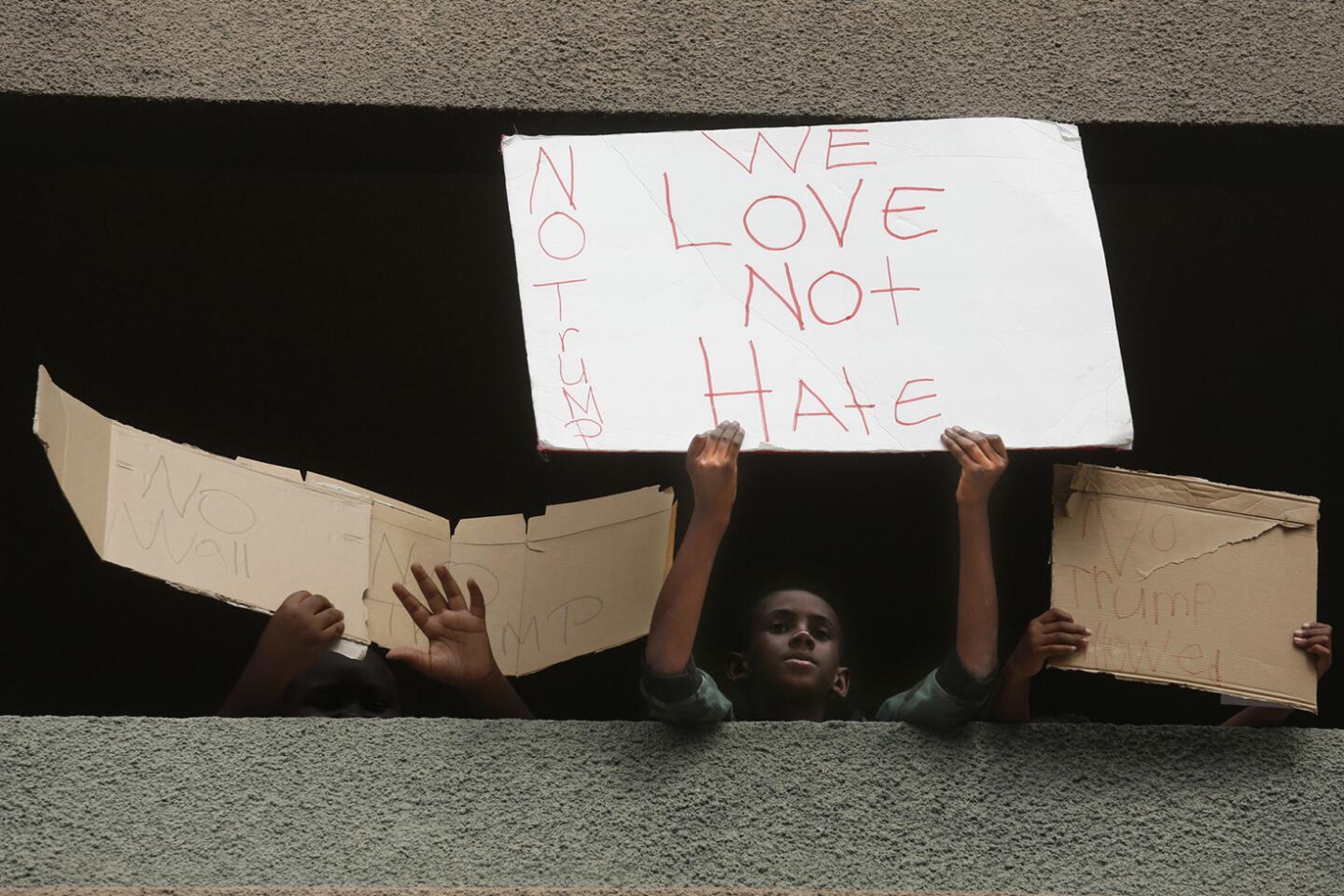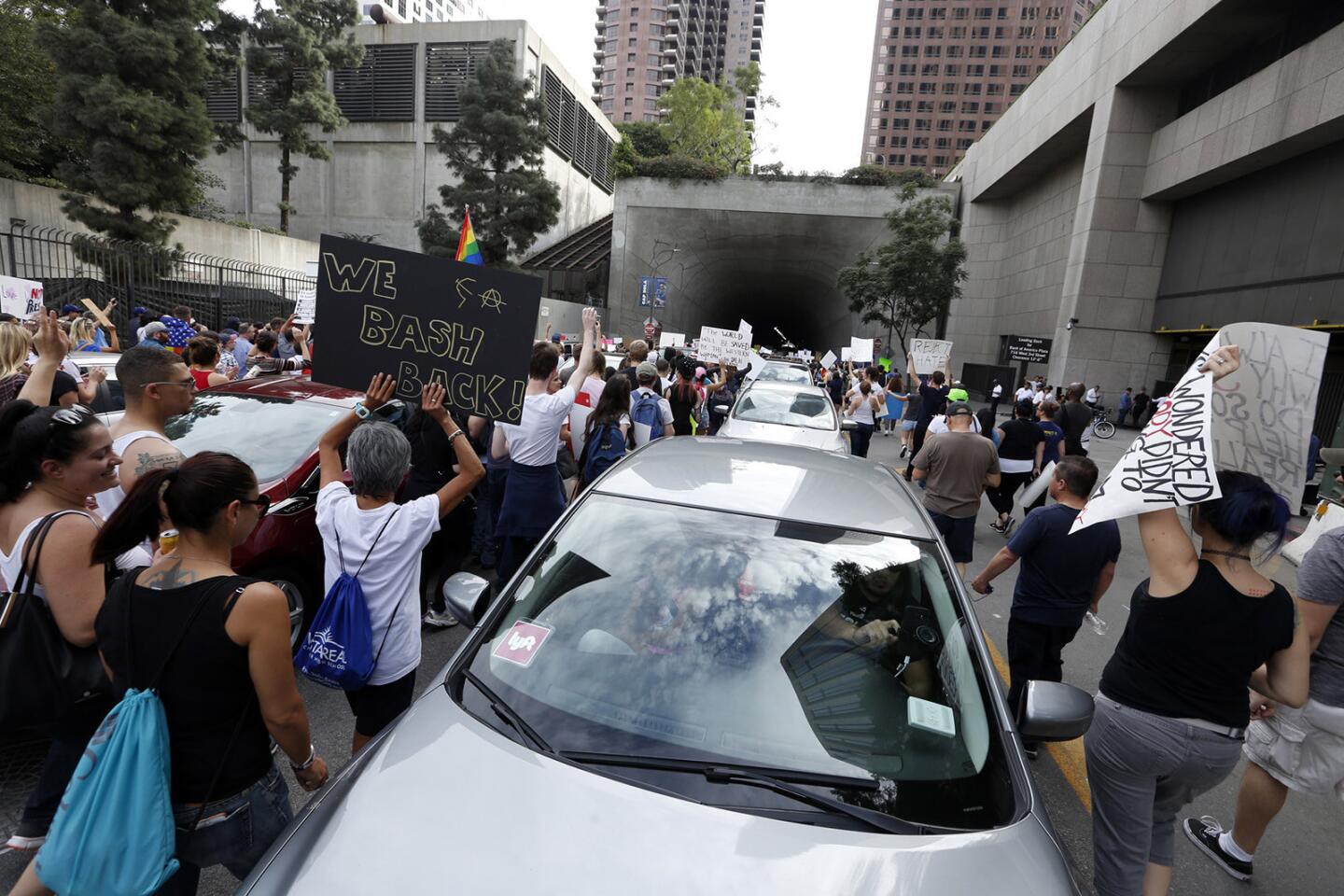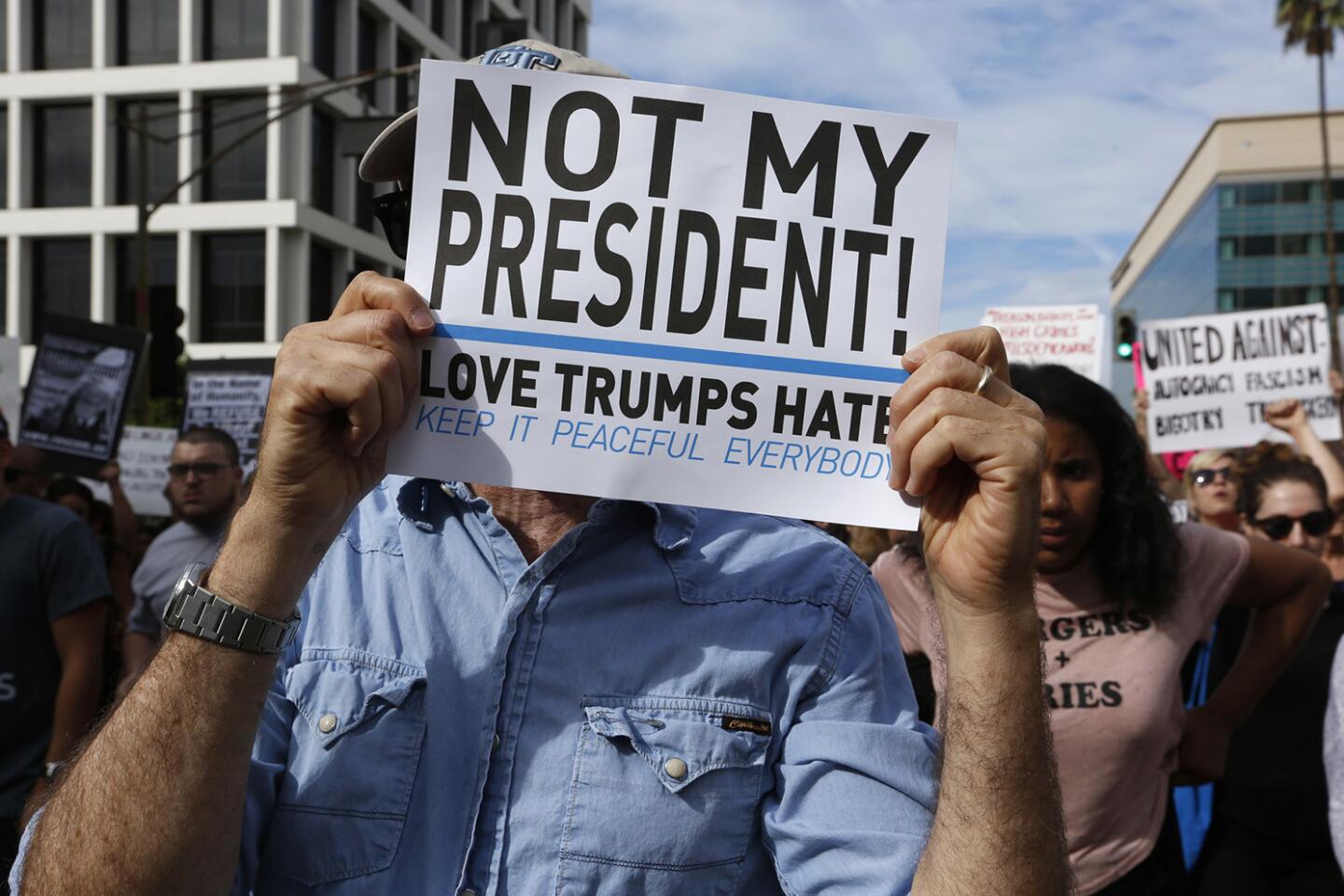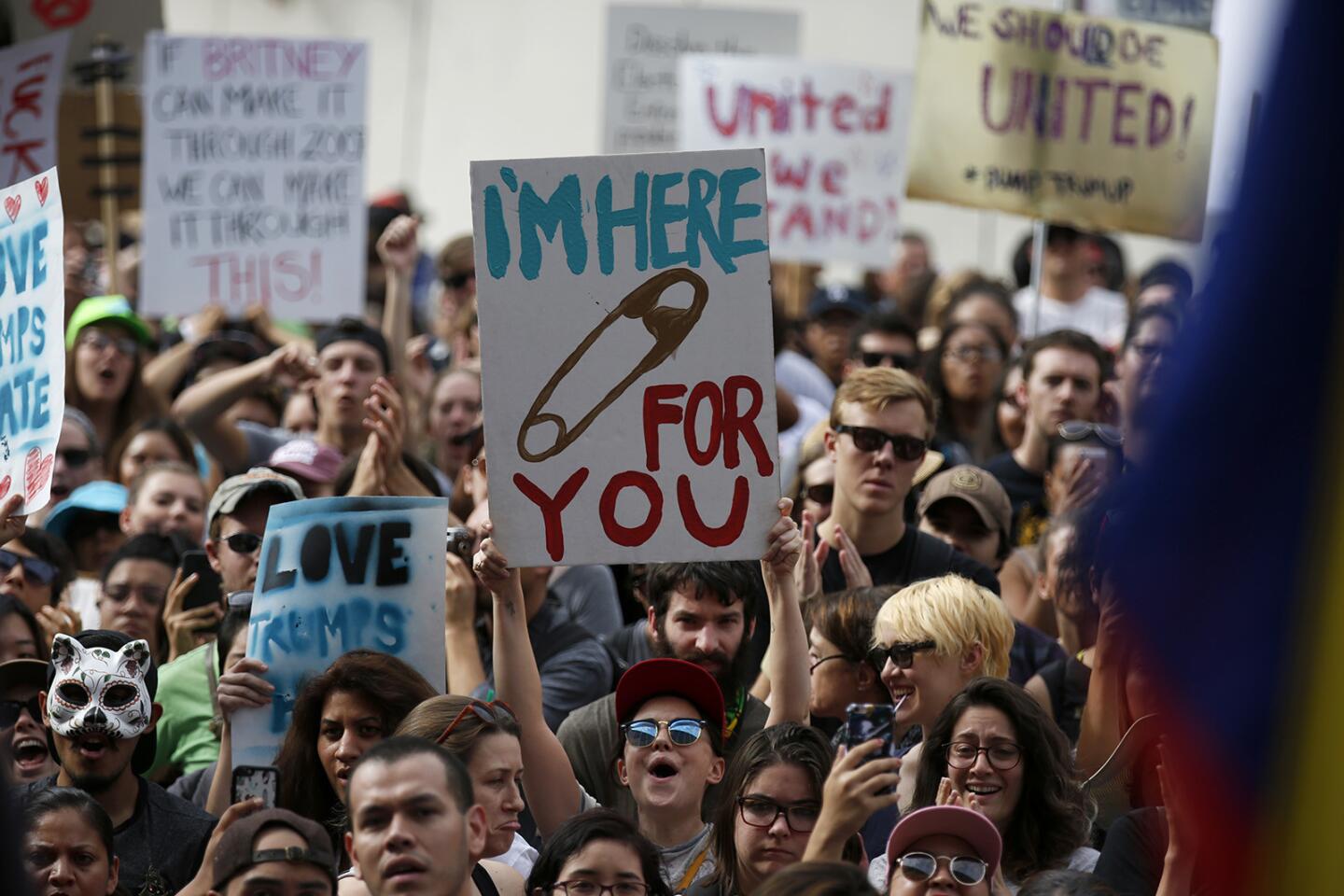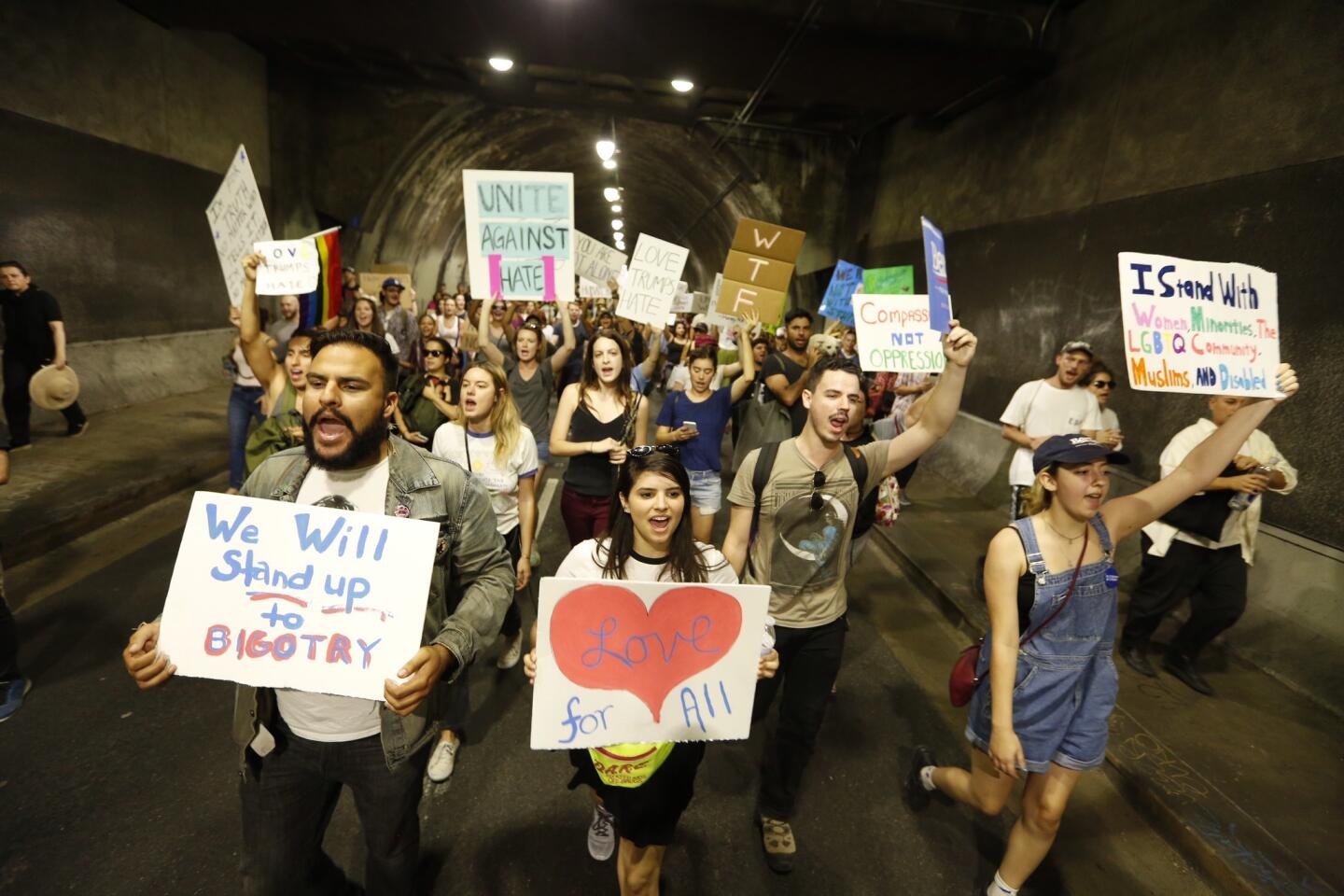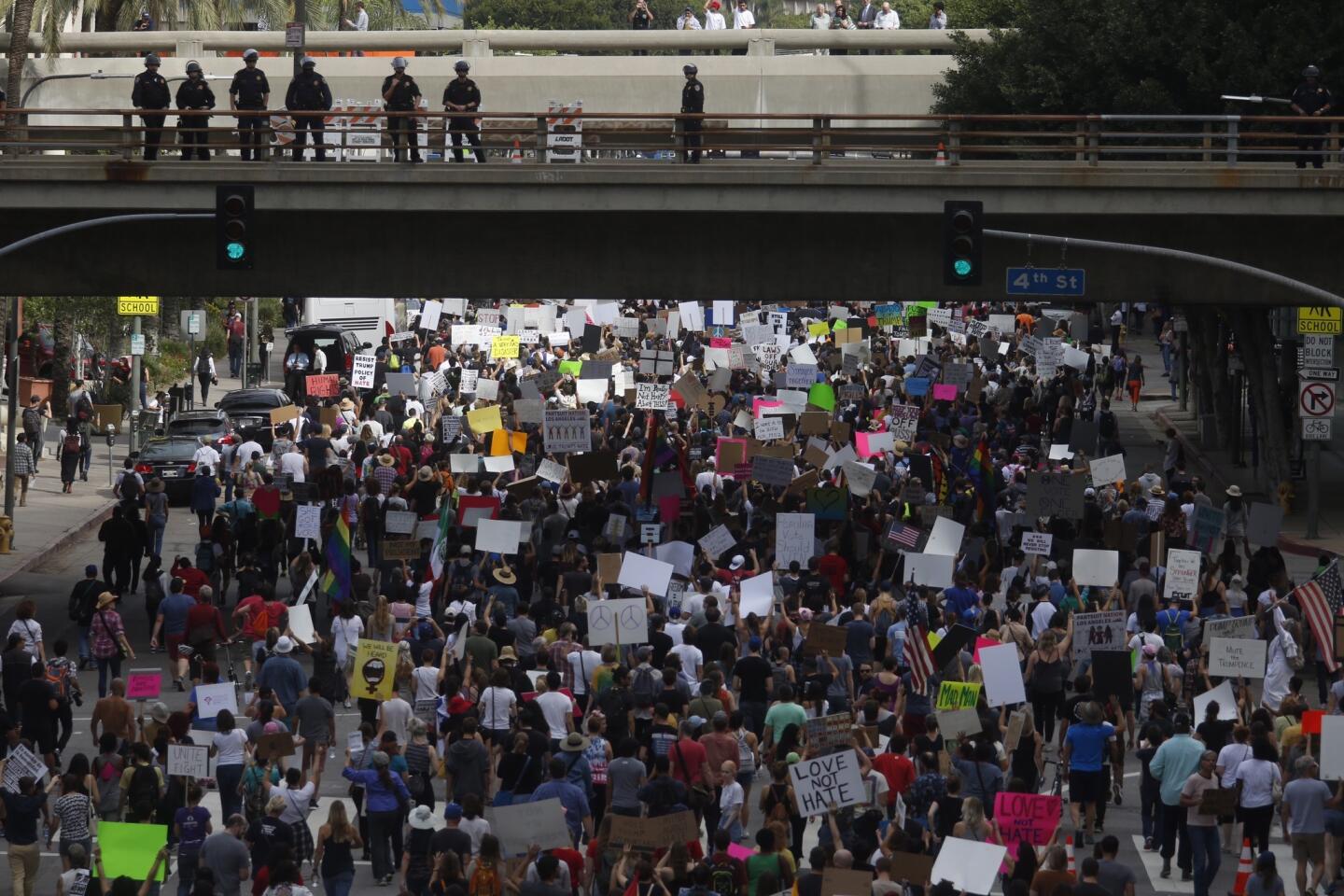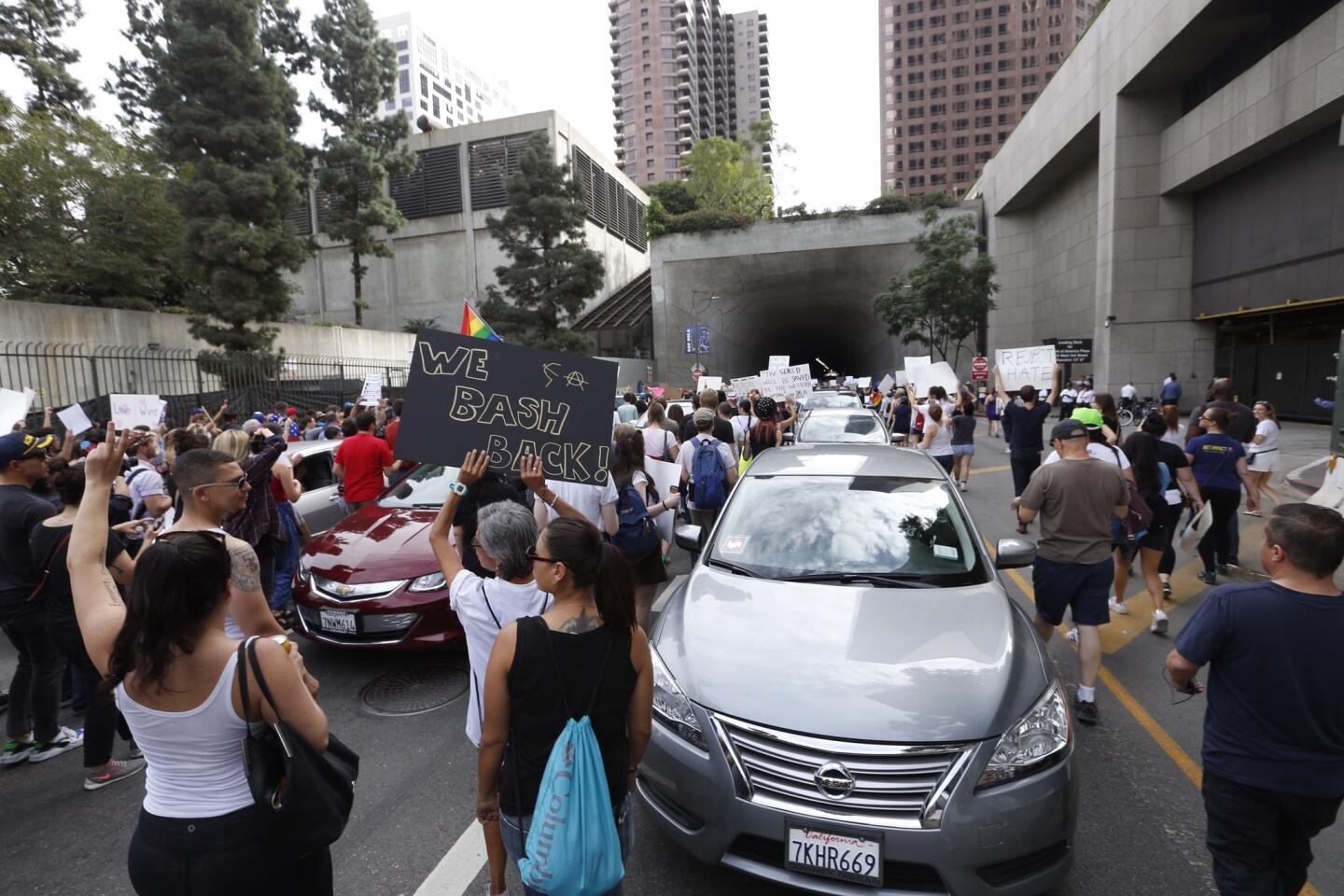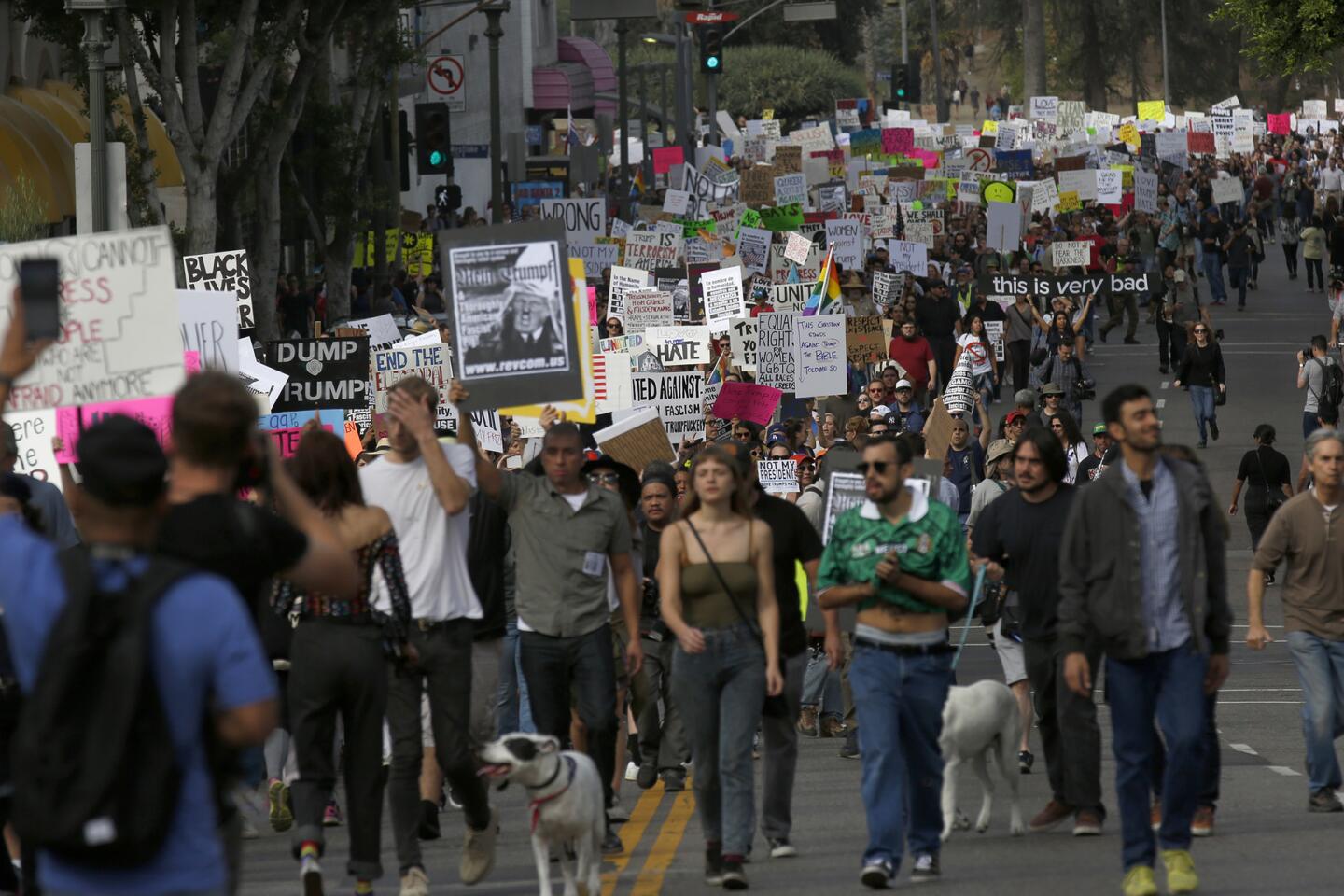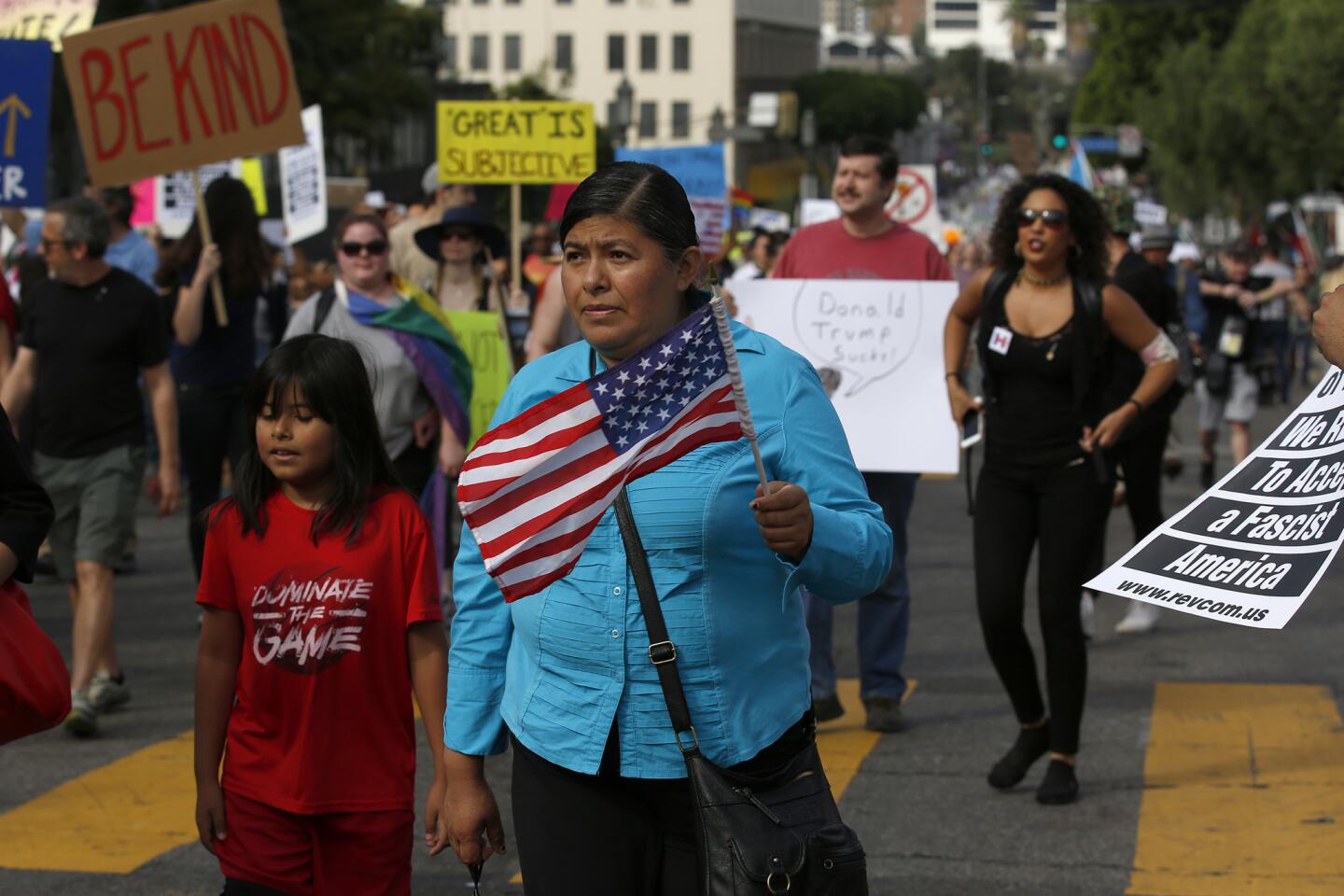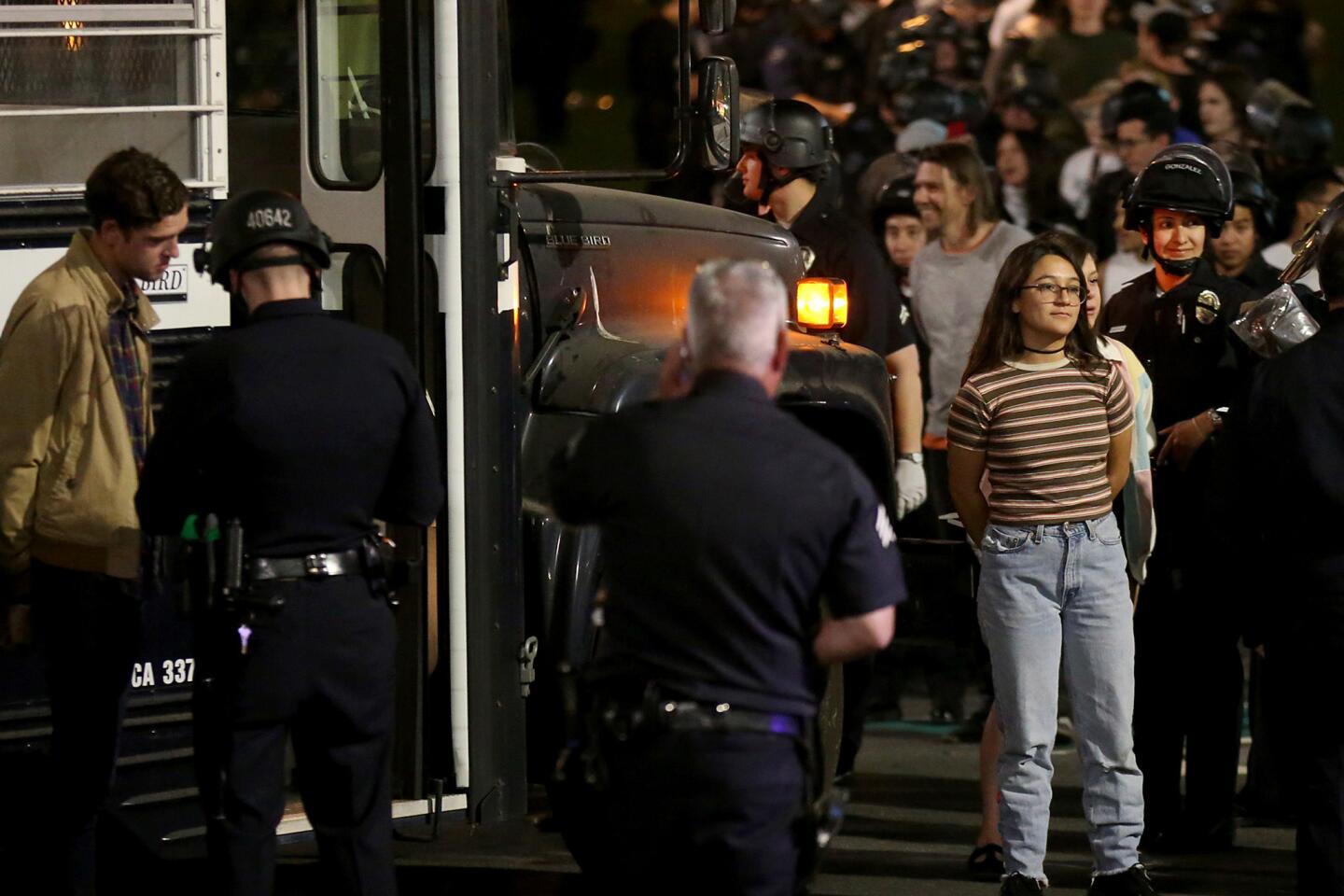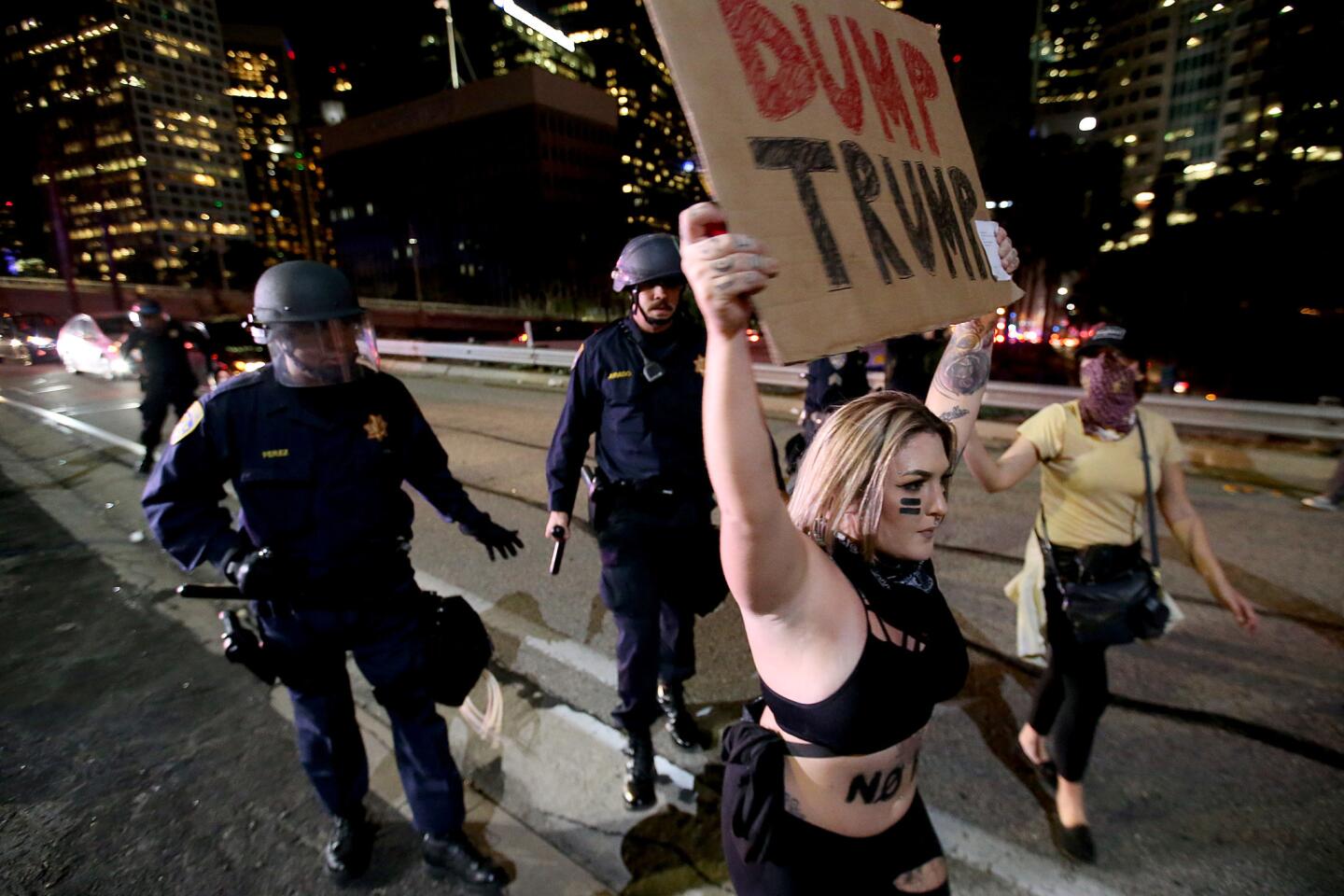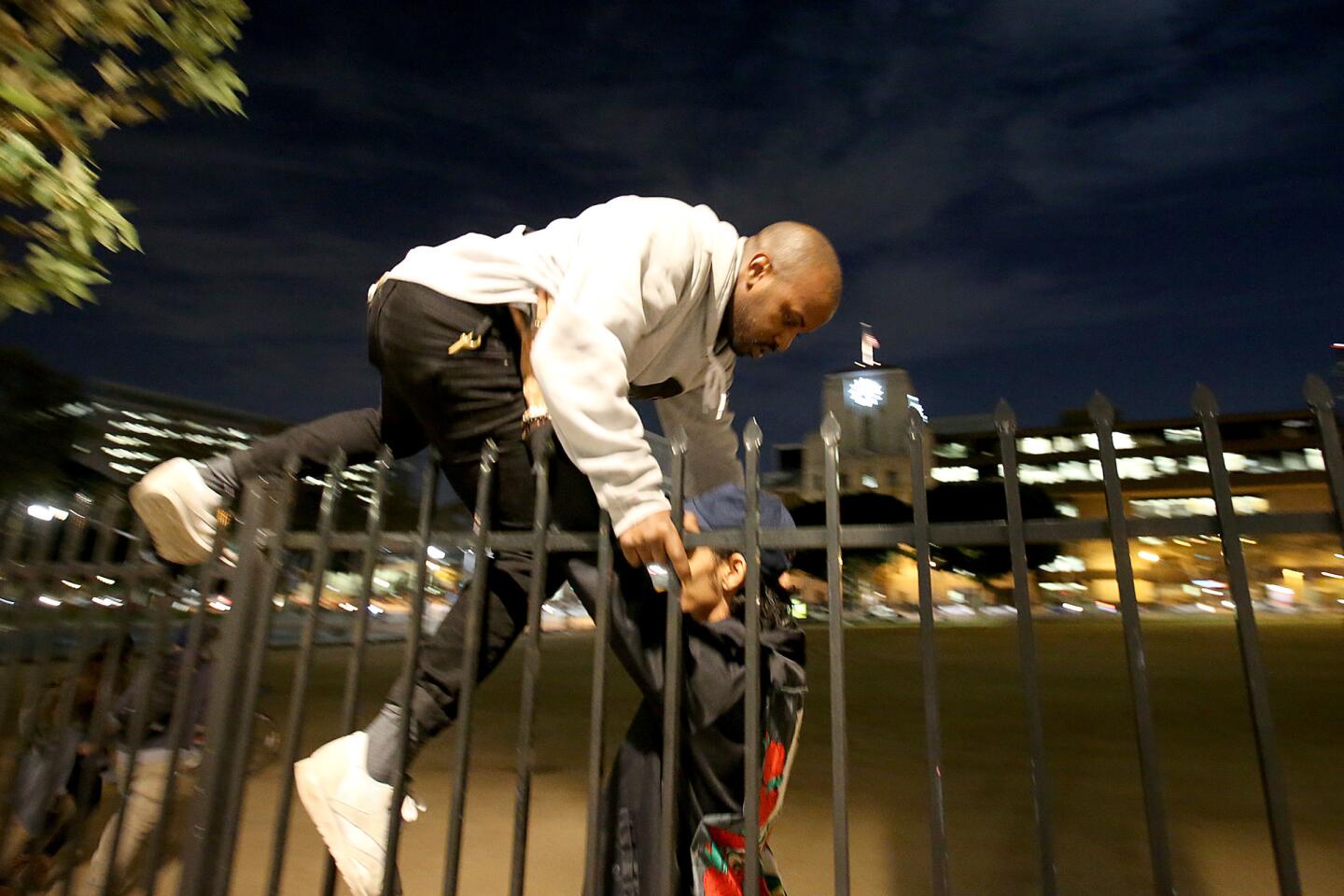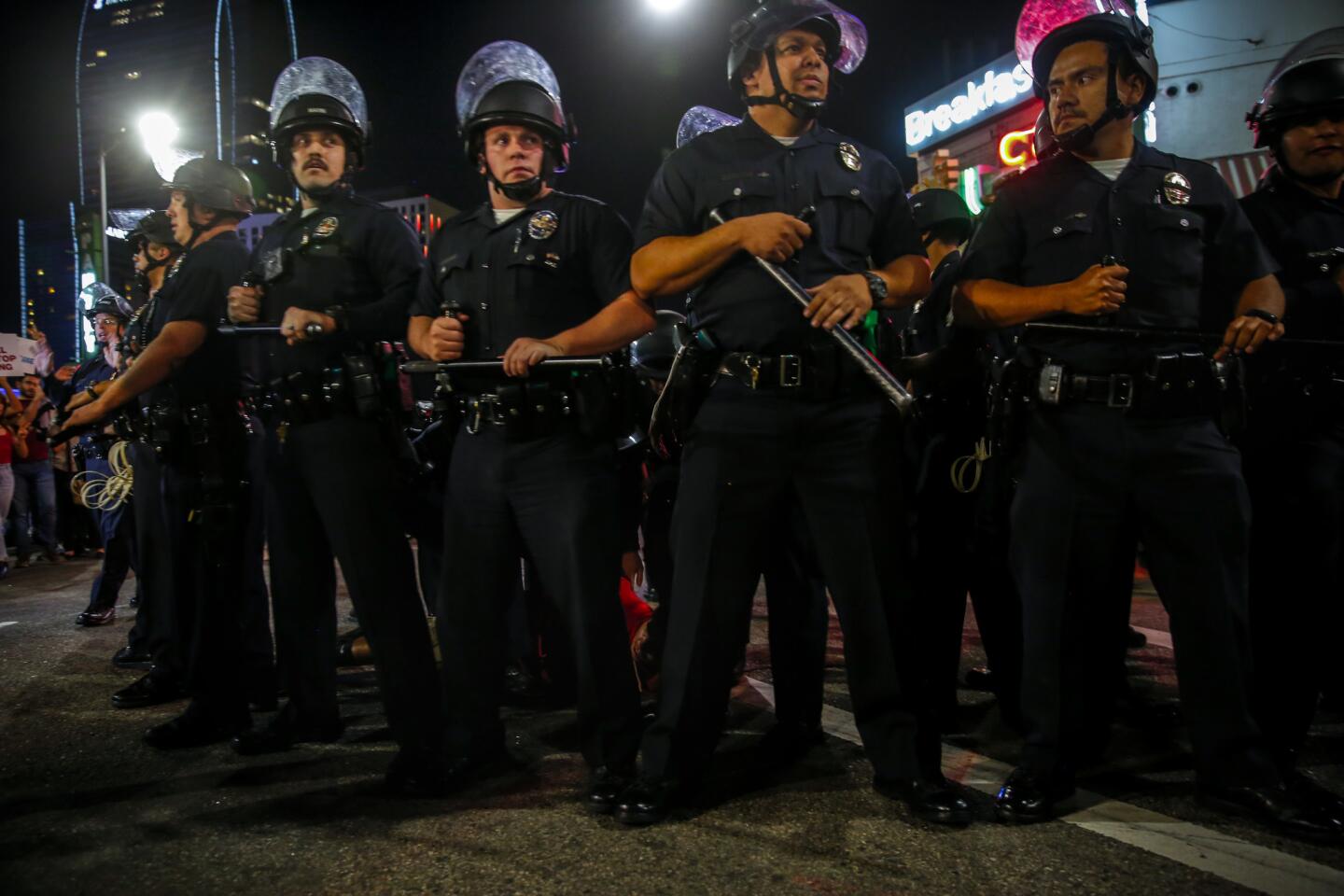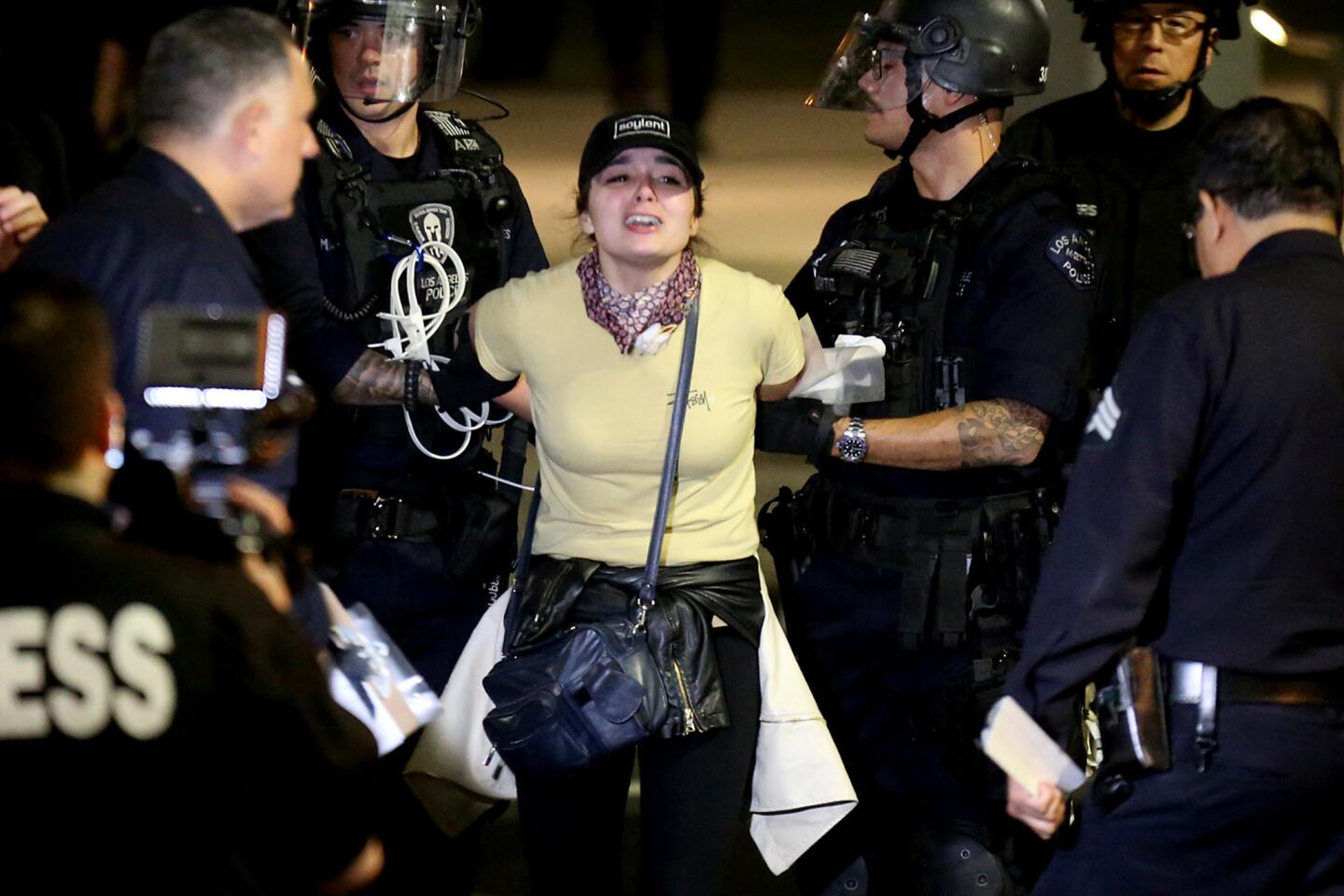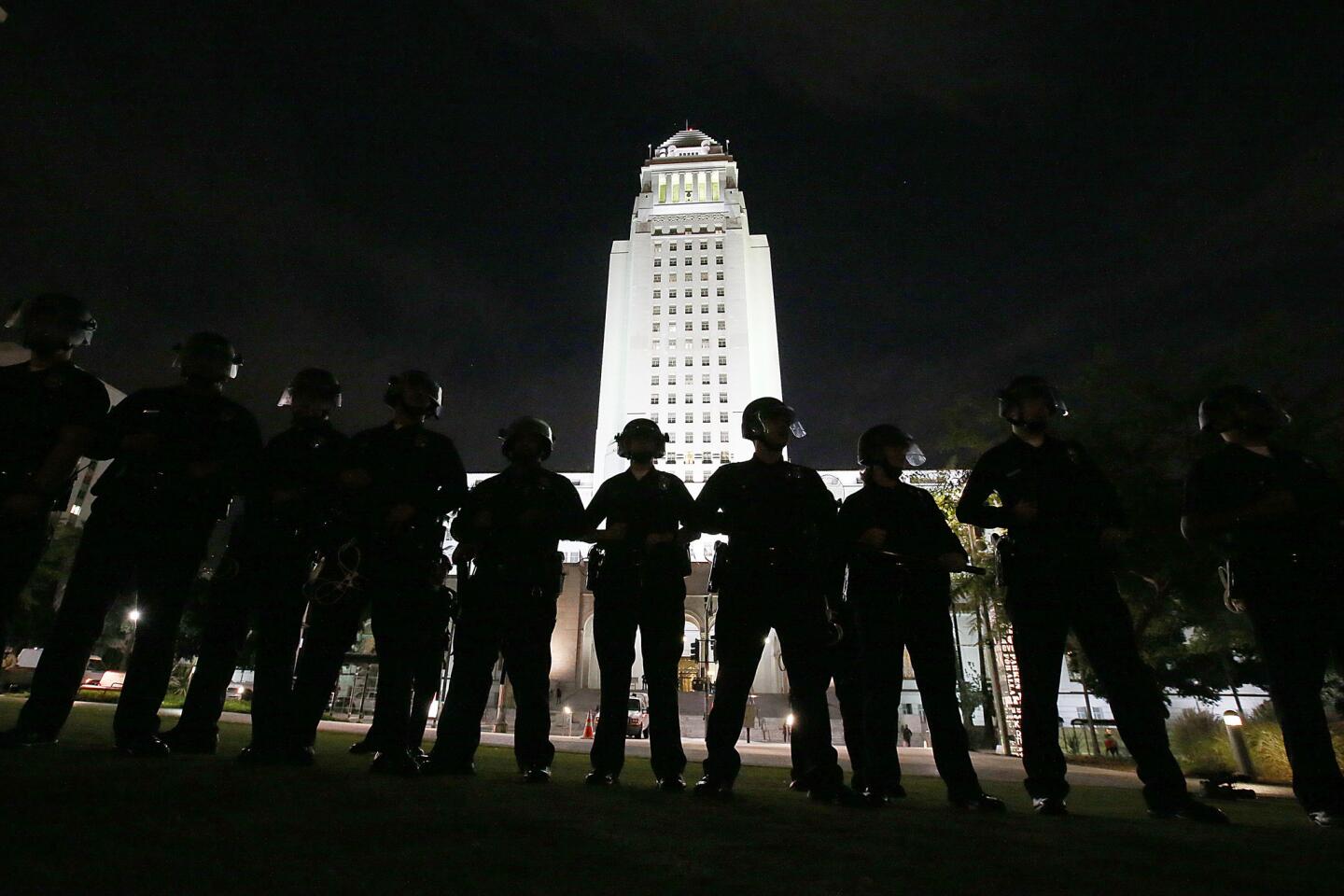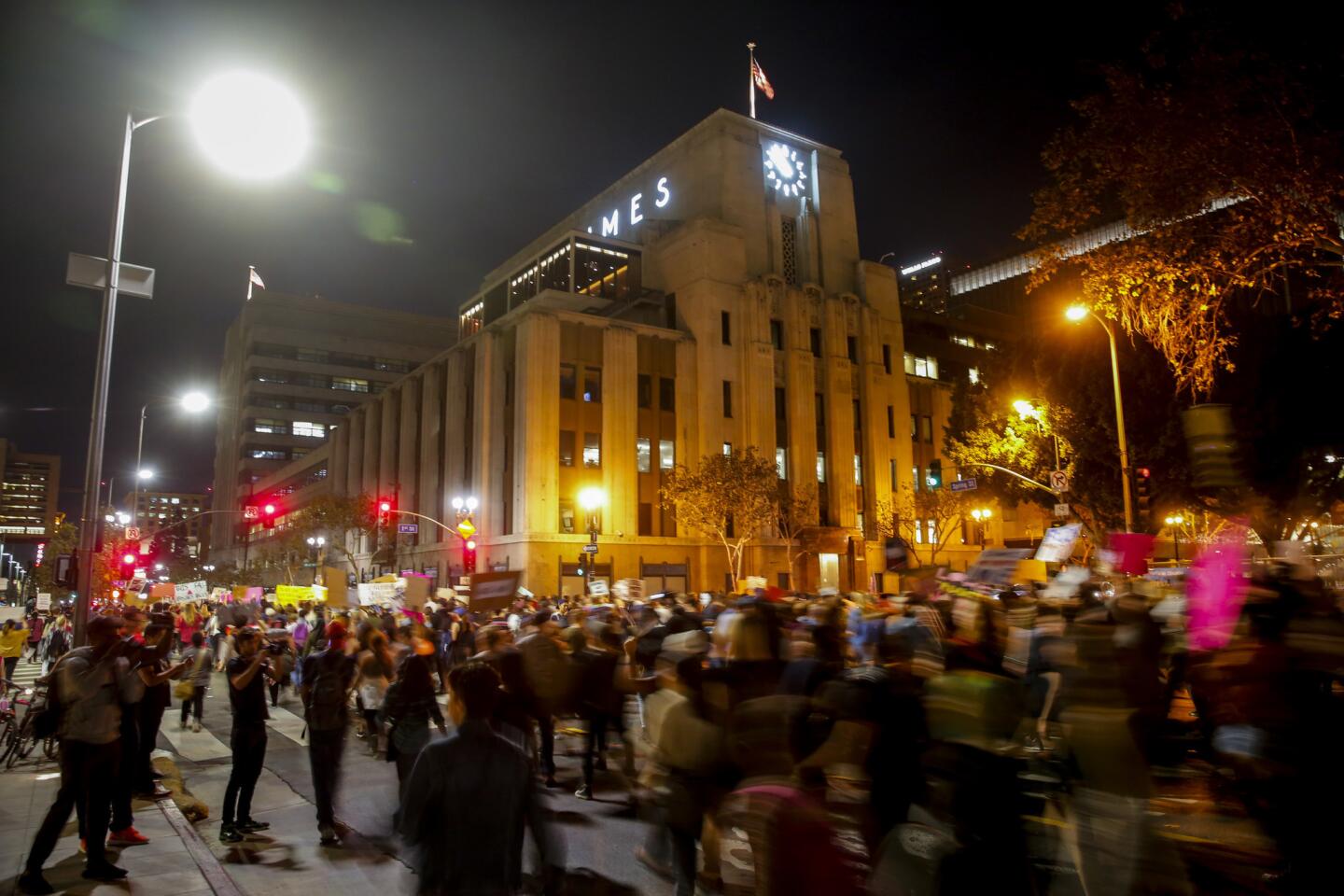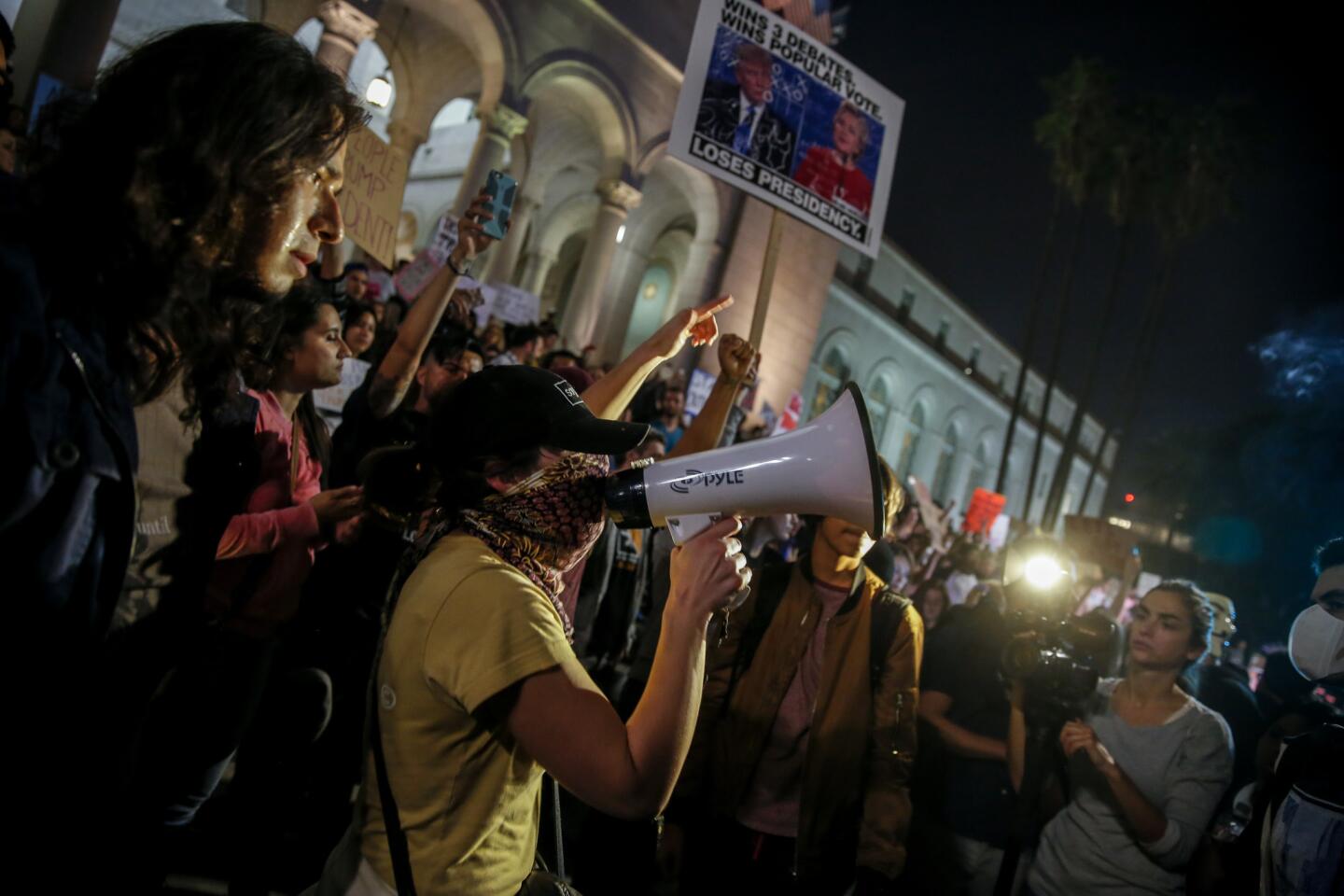8,000 anti-Trump marchers flood downtown Los Angeles; many fear immigration policies
- Share via
A boisterous but peaceful crowd that police estimated at about 8,000 people took to the streets of Los Angeles on Saturday to protest the election of Donald Trump as president of the United States.
It was the largest of several Los Angeles demonstrations in the days since voters elected Trump, a Republican who shocked conventional political wisdom by defeating Democrat Hillary Clinton on Tuesday. Trump’s attacks on people who are in this country illegally and his comments about women, among other things, brought many of the protesters to the streets, they said.
Saturday’s protests were marked by a relaxed but emotional atmosphere, with marchers being watched by large numbers of police officers. Some people brought their children, and many carried signs slamming Trump and demanding justice for immigrants, women and others.
City leaders have said they support the right of residents to demonstrate as long as they are respectful and don’t try to block freeways.
The protest started in MacArthur Park and then moved east into downtown Los Angeles.
Beatriz Devara said her 11-year-old granddaughter lives in Oregon, where classmates have been asking her when she’s “going back.”
“She’s third-generation,” said Devara, a teacher in Palmdale who was marching toward downtown on Saturday.
As protesters headed toward the 110 Freeway overpass, they carried flags of Brazil, Mexico and the United States. Some banged on drums, hit tambourines or blew whistles as others cheered and clapped.
Some called on bystanders to join in the march.
Guarav Shenoy stood outside his car near the intersection of Figueroa and 5th streets, watching the protesters chant, “Not my president.”
Shenoy said he had been waiting for more than 30 minutes. “I don’t mind being stuck in traffic as long as it’s for democracy,” said the 27-year-old USC alum who was headed toward the campus.
“[Trump] ran a campaign on divisiveness and hatred,” he said. “But now that he has been elected, I hope he can be more of a president and do something to unite the country.”
Nearby, Jose Marcea stood by his car watching the march. He too had been waiting in traffic for 30 minutes, he said. Behind him, rows of cars and buses were idling.
“This is OK; I’m OK with all this,” said Marcea, 44. “I think it’s important that people express how they feel. It’s a free country, after all.”
Marcea, who lives in Van Nuys, said he was bothered by Trump’s victory.
“This is hard to take in. I mean, it bothered me what he said about deporting 11 million illegal immigrants and all the offensive things he has said about everyone, including women.”
Demonstrations also took place in other cities Saturday including New York, where thousands of marchers headed to Trump Tower, closing off streets and causing gridlock in parts of Manhattan.
This is the first large daytime protest in L.A. since Trump was elected. The other protests occurred at night and resulted in some clashes. Los Angeles police have arrested hundreds of people over the last few days, including on Wednesday night when some demonstrators blocked lanes on the 101 Freeway.
Nearly 200 anti-Trump protesters were arrested in downtown Los Angeles early Saturday morning after refusing the LAPD’s order to disperse. One undercover LAPD officer was assaulted on Thursday night.
Saturday’s march was reminiscent in some ways of the series of huge immigration protests that hit Los Angeles a decade ago. Fueled by hard-line proposals in Congress regarding immigrants here illegally, nearly 500,000 people marched through downtown L.A. in 2006.
California is a likely battleground as Trump crafts his immigration policy.
Trump said during the presidential campaign that he would build a wall along the U.S.-Mexico border and deport people in the country illegally. He is expected to unwind the Deferred Action for Childhood Arrivals program, an initiative by President Obama that protects immigrants brought to the U.S. illegally as children.
But California has some of the nation’s most liberal policies when it comes to handling immigrants here illegally. The state has allowed them to get driver’s licenses, health coverage for children and in-state tuition. Institutions like churches also support immigrants.
Trump made illegal immigration a central issue of his campaign, arguing that people here without proper documentation are a drain on the economy and take jobs away from U.S. citizens.
Trump has not outlined any specific immigration policies since winning the election. But Kris Kobach, Kansas secretary of state and a member of Trump’s immigration policy transition team, told The Times that the U.S. could easily boost deportations by more than 75% in his first year in office.
Experts have said Trump could also reduce or slow down the process by which Mexicans get travel cards and visitor visas. But other Trump immigration ideas — such as building a massive wall along the border — are probably going to be more difficult to implement, they said.
The Saturday protest began to wind down in the afternoon, though another round of night marches was possible.
As many left, a few hundred lingering protesters gathered on the steps of City Hall to share their thoughts on the election.
Passing a megaphone among them, some demonstrators talked about the importance of finding a direction forward, others said they wanted a female president, and still others admitted to feeling as if they had let Hillary Clinton down.
One woman, who said she was transgender, warned listeners against getting violent.
“If we get violent, we get stopped,” she said.
A man urged the group to sign a petition on MoveOn.org to abolish the electoral college.
“Trump didn’t win the popular vote,” he said. “I don’t understand why we aren’t pushing that harder.”
[email protected] | @DeborahNetburn
[email protected] | @skarlamangla
[email protected] | @LATbermudez
ALSO
A primer on executive power: Trump can’t end same-sex marriages, but he could speed up deportations
California and Trump are on a collision course over immigrants here illegally
Interactive map: See how every Southern California neighborhood voted
UPDATES:
4:40 p.m.: This story was updated with crowds thinning and scene at City Hall.
Originally posted at 2:30 p.m.
More to Read
Sign up for Essential California
The most important California stories and recommendations in your inbox every morning.
You may occasionally receive promotional content from the Los Angeles Times.
